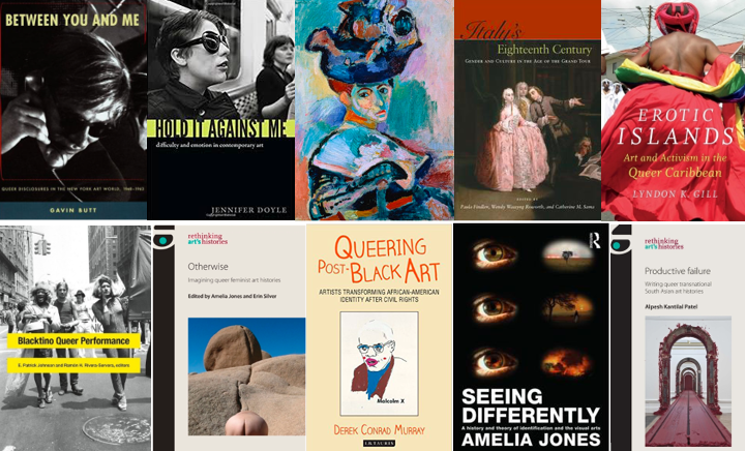CAA News Today
Ann Temkin Named Chief Curator at MoMA
posted by Christopher Howard — Sep 03, 2008
The Museum of Modern Art in New York has announced that Ann Temkin will succeed John Elderfield as chief curator of painting and sculpture. Temkin, who served for thirteen years at the Philadephia Museum of Art in Pennsylvania, has been a curator at MoMA for five years. Among her exhibitions there are Color Chart: Reinventing Color, 1950 to Today (2008) and Against the Grain: Contemporary Art from the Edward R. Broida Collection (2006).
The New York Times has the story. Photograph by Robin Holland and provided by the Museum of Modern Art.
CWA Picks: Fall 2024
posted by CAA — Sep 23, 2024
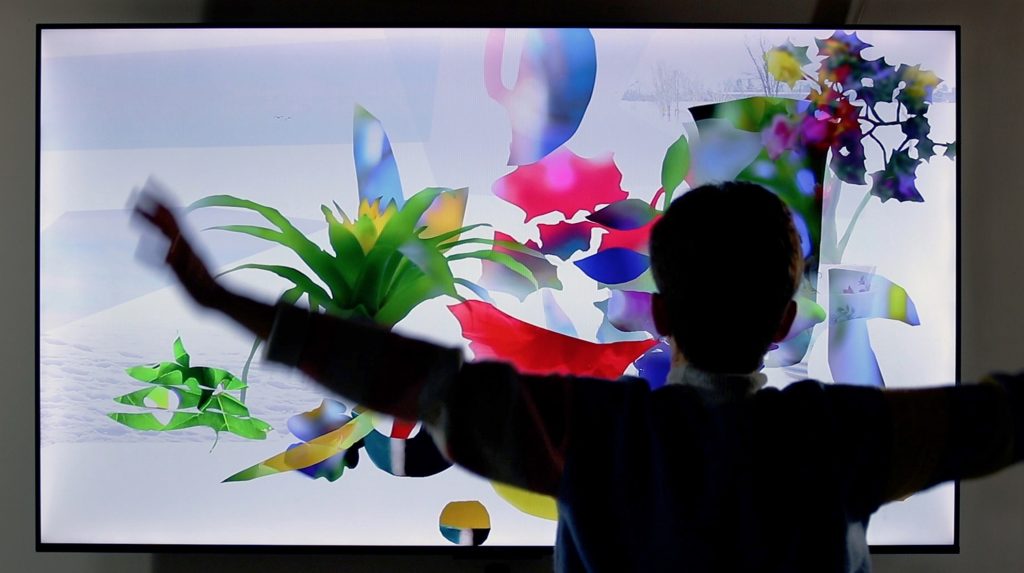
Cheryl Pagurek, Winter Garden interactive digital collage, 2023
The exhibitions and other events selected for the Committee on Women in the Arts (CWA) Fall Picks highlight the multitude of technologies–old and new–that artists have used to bring attention to overlooked communities including fellow creatives: groups sidelined for reasons of race, region, gender, sexuality, and other marginalizing factors and non-human entities with whom we share space.
UNITED STATES
Consuelo Kanaga: Catch the Spirit
September 28–February 9
SFMOMA, San Francisco, CA
Consuelo Kanaga: Catch the Spirit presents the first West Coast retrospective on the work of this critical yet overlooked figure in the history of modern photography. Over the course of six decades, Kanaga championed the artistic value of photography and documented urgent social issues, from urban poverty and labor rights to racial terror and inequality. Her work remains as relevant today as it was during her own lifetime. Organized from the collection of the Brooklyn Museum, this exhibition charts the artist’s vision, which spans pathbreaking photojournalism, modernist still lifes, and celebrated portraits of Black Americans.
Dissident Sisters: Bev Grant and Feminist Activism, 1968-72
Through December 1
The Block Museum, Northwestern University, Evanston, IL
In 2023, the Block Museum acquired a group of photographs by folk musician and photographer Bev Grant. In the late 1960s and early 70s, Grant participated in and photographed left-wing and radical protests in and around New York City. She was a member of the group New York Radical Women and documented events associated with the group, as well as the Moratorium on the Vietnam War and other anti-war protests, pro-abortion rallies, and the Miss America Pageant protest. Her work presents a view of events reflecting broad political engagement and social justice demonstrations that defined the late 1960s and 70s in the US.
Elizabeth Catlett: A Black Revolutionary Artist and All That It Implies
Through January 19
Brooklyn Museum, NYC
Prolific Black social realist printmaker, sculptor, and painter Elizabeth Catlett (1915–2012), who was born in Washington, DC, but worked primarily in Mexico, devoted her oeuvre and activism to uplifting the Black and Mexican women and other working-class individuals who so often formed her subjects. The Brooklyn Museum show includes more than 150 works by Catlett.
Ja’Tovia Gary: The Giverny Suite
Through December 7
The Block Museum, Northwestern University, Evanston, IL
Ja’Tovia Gary uses documentary film and experimental video to address representation, race, gender, sexuality, and violence. Gary was at the Terra Foundation for American Art’s residency program in Giverny, France during the summer of 2016 when several widely-publicized police-involved killings of African Americans took place in the United States. An immersive, three-channel film installation, The Giverny Suite, (2019) centers the voices and bodies of Black women in an experimental film essay that is a meditation on the interconnected themes of insecurity/safety, isolation/respite, autonomy, and love. Gary presents a complicated and nuanced portrait of the diversity and complexity of Black women’s relationship to physical and emotional security.
Jasmine Gregory: Who Wants to Die for Glamour
October 10–Spring 2025
MoMA PS1, NYC
The monumental mixed-media figural and abstract canvases of Zurich-based American artist Jasmine Gregory (b. 1987) draw from art history and popular culture to critique commodification, consumerism, and the systems of cultural patrimony, including the racism and misogyny that dwell therein.
Kandy G Lopez: (In)visible Threads
Through March 2
Riverside Art Museum, Riverside, CA
Kandy G Lopez, a multidisciplinary Afro-Caribbean American artist, critically engages with the complexities of identity and marginalization. Lopez’s fiber-based artworks serve as a powerful medium to navigate the intricacies of ancestry, race, class, and gender. As an artist, Lopez is driven by a desire to represent marginalized individuals who inspire and move her, constantly seeking challenges both materialistically and metaphorically. Her works are born from a deep-seated need to learn about her people and culture, fostering a dialogue between the artwork and the viewer. This exhibition features her large-scale fiber works – portraits “painted” with yarn.
Laura Aguilar: Nudes in Nature
Through January 5
Phoenix Art Museum, Phoenix, AZ
Laura Aguilar: Nudes in Nature celebrates the work of photographer Laura Aguilar (1959-2018) and her series of intimate portraits of nude, large-bodied women in natural settings. Nudes in Nature brings together nearly 60 photographic works from the most recognized of Aguilar’s series. Featured works depict the Southwestern region of the United States and highlight the inherent connections between nature and the female form. Exhibited in conversation, they encourage reflection on the ways female bodies are perceived within the natural world in comparison to how they are viewed in social and cultural spaces.
Through October 13
Colby College Museum of Art, Waterville, ME
November 16–May 18, 2025
The Aldrich Contemporary Art Museum, Ridgefield, CT
When she worked in her New York studio, said painter Martha Diamond (1944–2023), she was “thinking of infinity: to the time of religion, of history, … using shapes that have been significant to people for thousands of years.” A selection of Diamond’s drawings and monotypes appears in this exhibition alongside examples of her better-known large-scale abstracted city views and full abstractions in oil on canvas, all engaging with the notions of cyclicality and disruption that are central to the geological and anthropological theories of deep time.
Ming Smith: Wind Chime
Through January 5
The Wexner Center, Columbus, OH
Ming Smith: Wind Chime explores spirituality, movement, and feminism in a solo exhibition pairing recent work by the Columbus-raised artist Ming Smith with the photographic series that started her career in 1972. The centerpiece of the exhibit, a multimedia commission that animates a series of photographs using projection, marks an entirely new direction in her practice. Also on view are recent collages and color photographs—all set to an ambient soundscape created by Smith’s son, Mingus Murray. The exhibition also includes nearly 30 black-and-white photographs from Smith’s Africa series, taken during her travels to Senegal, Ethiopia, Ivory Coast, and Egypt over the span of three decades.
Nicole Eisenman: Fixed Crane for Madison Square Park
October 24–March 9
Madison Square Park Conservancy, NYC
Nicole Eisenman, best known for incisive works that capture the human experience in unexpected, grim, and humorous scenes, continues her innovation through sculpture with a new commission that destabilizes familiar heroic objects associated with exploration and advancement. On view in the park’s Oval Lawn, Eisenman offers visitors the opportunity to explore and engage with a toppled 100-foot-long industrial crane embellished with roughhewn sculptural “barnacles.” The artist draws inspiration from art history—referencing Duchamp’s readymades, Manet’s Le Déjeuner sur l’herbe, and Rodin’s figures. Eisenman’s project lends humanity and humor to these references, challenging our notions of progress and achievement.
Rosalie D. Gagné: A Contemporary Alchemist
Through December 22
Neuberger Museum of Art, Purchase, NY
Combining organic materials like glass, clay, and live plants with inorganic matter like plastics and computers, Montreal-based artist Rosalie D. Gagné produces large-scale sculptural installations that examine our perceptions of nature and technology and the interactions of organic systems with human-built ones, including simulation in the form of biomimicry. The Neuberger retrospective will include a re-creation of Gagné’s 2020 Artificial Kingdom IV comprising forty-five suspended, tentacled polyethylene forms that respond to viewer movements.
Steina: Playback
October 25–January 12
MIT List Visual Arts Center, Cambridge, MA
In fall 2024, the List Visual Arts Center will present the first solo exhibition in over a decade of Steina, the pathbreaking media artist whose work traverses video, music, and technology through a commitment to spontaneity and play. Steina’s nearly five decades of video work queries the possibilities of sound-image exchange, machine vision, and electronic abstraction. This exhibition will trace Steina’s creative practice from early collaborative works with Woody Vasulka to her independent explorations of optics, machine vision, and a liberated, non-anthropocentric subjectivity. The show seeks to both bring renewed recognition to the artist’s innovative vision and argue for her influence and relevance today as a younger generation of artists consider modes of art-making that resist easy commodification and question the place of technology and the human in relation to larger ecological and planetary concerns.
Suchitra Mattai: Myth from Matter
Through January 12
National Museum of Women in the Arts, Washington, D.C.
Combining richly colored textiles, found objects, beads, and more, multidisciplinary artist Suchitra Mattai (b. 1973, Georgetown, Guyana) explores themes of history, identity, and belonging. The forces that lead certain stories to be remembered, or forgotten, are central to her art. Drawing on her Indo-Caribbean roots, Mattai weaves together personal narratives, collective mythologies, and colonial history. Suchitra Mattai: Myth from Matter is the artist’s first solo exhibition in Washington, DC. Large-scale textile installations, sculptures, collages, and paintings by Mattai are presented with a selection of related historical artworks from Europe and Southeast Asia.
MEXICO
Ana Gallardo: Tembló acá un delirio
Through December 15
Museo Universitario Arte Contemporáneo, Mexico City
Since the end of the 90s, a time when globalization instrumentalized precarity and the feminization of labor beyond the scope of care and the domestic, the work of Ana Gallardo has problematized the privatization of feelings and social relationships through a perspective that centers the open wound of violence against women.
¡Hija de su madre! Una exposición de Mónica Mayer
Through September
Galería de Arte Contemporáneo de Xalapa, Mexico
The exhibition Her Mother’s Daughter! An exhibition of Mónica Mayer traces a fascinating journey through the artist’s different creative stages, encompassing more than one hundred historical and recent pieces created over the last five decades around themes such as family, motherhood, and gender. Since the 1970s, Mónica Mayer (Mexico, 1954) has held two central convictions: that the personal is political and that art is inseparable from life itself. In her works, she uses irony and performance to examine the evolution of family structures and question the persistence of exploitation and sexist norms affecting women.
Myra Landau: Sensitive Geometry
Through February 23
Museo Universitario Arte Contemporáneo, Mexico City
Although Myra Landau’s work is substantial to the development of geometric abstraction in the second half of the twentieth century, her work is little known. This retrospective responds to the urgency to not only investigate and give visibility to female artists who have been left out of the hegemonic historiographic discourse, but also to understand their contributions to the history of geometric abstraction, particularly sensitive geometry, an approach that has been excluded by the art canon in Mexico.
CANADA
Cheryl Pagurek: Winter Garden
Through December 8
Surrey Art Gallery, Surrey, BC
Using machine learning software, Winter Garden mirrors the presence and movement of viewers via a webcam, creating an ever-changing collage composed of motifs of lively indoor plants against a desolate winter landscape. The concept began from a series of still-life photographs depicting a small oasis of indoor plants that the artist tended to during the lockdown in the winter of 2021. As a woman in the cross-over area of art and tech, Pagurek aims to broaden approaches and themes presented in the field.
Lucy Qinnuayuak
Opening October 9
Art Gallery of Ontario, Toronto, ON
One of the first artists to ever begin creating works at the print studio in Kinngait, Nunavut in the 1960s, Lucy Qinnuayuak’s colorful depictions of birds and scenes of domestic life bring to life the world as she saw it. In this exhibition of 20 works on paper, the viewer is invited to explore the evolution of Qinnuayuak’s style, from her concept drawings to stonecut prints, many of which include her much-loved owls.
SOUTH AMERICA
Cronotopías: Silvia Rivas
Through October 6
Museo de Arte Moderno de Bogotá, Colombia
Cronotopías is the first solo exhibition in Colombia dedicated to the work of Argentine artist Silvia Rivas. The exhibition explores the relationship between time and space through video installations, animations, and liminal environments. Rivas has developed extensive work in this field since the late 1990s and her work has been internationally recognized for its ability to create immersive and emotionally resonant experiences.
Desde la ventana: Ana Mercedes Hoyos. Una retrospective
Through October 6
Museo de Arte Moderno de Bogotá, Colombia
Through the Window: Ana Mercedes Hoyos. A Retrospective is the fourth exhibition of the artist at MAMBO, her second retrospective, and the most comprehensive to date, showcasing the entirety of Hoyos’ work (1942–2014), particularly the period between 1968 and 1984. This period constitutes one of the most important contributions of the artist to contemporary Colombian and Latin American art, during which she developed her unique form of pop, landscape, and abstraction.
Musa. Perspectivas femeninas en las Colecciones del MAMM y MAC Panamá
Through May 4
Museo de Arte Moderno de Medellín, Colombia
This exhibition brings together works from the collections of the Museo de Arte Moderno de Medellin and the Museo de Arte Contemporáneo de Panama and seeks to make visible the works of female artists who historically have had less prominence than their male counterparts.
EUROPE & UK
Against All Odds: Historical Women and New Algorithms
Through December 8
Statens Museum for Kunsts, Copenhagen, Denmark
During the years 1870–1910, a number of Nordic female artists achieved success against all odds. However, despite their success, they were later forgotten and quietly disappeared from history. What happened? We investigate this question, bring the artists back into the spotlight and explore how artificial intelligence can be used to understand and communicate history in new ways. All 24 artists in the exhibition have one thing in common: they left their Nordic home countries to pursue their artistic ambitions abroad in places such as Germany, Italy, France and Greece. There, they met other women in the same situation, forming networks across national borders. In the exhibition, you will encounter both spectacular artworks by the 24 artists and digital installations based on artificial intelligence. These installations use the women’s artworks, biographies and research to tell their collective story.
Gabriele Münter: the Great Expressionist Woman Painter
November 12–February 9
Thyssen-Bornemisza National Museum, Madrid, Spain
Gabriele Münter (1877–1962) was one of the founders of The Blue Rider [Der Blaue Reiter], the legendary group of Expressionist artists based in Munich. The exhibition, which includes more than one hundred paintings, drawings, prints and photographs, aims to reveal an artist who rebelled against the limits imposed on women of her day and who succeeded in becoming one of the most notable figures of German Expressionism in the early 20th century.
Hilary Heron: A Retrospective
Through October 28
Irish Museum of Modern Art, Dublin, Ireland
Presenting the work of pioneering Dublin-born, modernist sculptor Hilary Heron (1923 – 1977), this is the first major retrospective exhibition of Heron’s work since 1964. Bringing together work from national and international collections, the exhibit includes Heron’s carvings, welding and castings. A master welder, Heron’s practice was highly unusual for an Irish artist, let alone a woman in the 1950s. Her work tactfully and skillfully broaches themes of gender, relationships, deep histories and religion through impressive, varied mediums including stone, lead, steel and wood. Hilary Heron: A Retrospective seeks to correct the ways that her work has been overlooked in Irish and international histories of modern sculpture.
Zanele Muholi
Through January 26
Tate Modern, London, UK
Zanele Muholi is one of the most acclaimed photographers working today, and their work has been exhibited all over the world. With over 260 photographs, this major exhibition presents the full breadth of their career to date. Muholi describes themself as a visual activist. From the early 2000s, they have documented and celebrated the lives of South Africa’s Black lesbian, gay, trans, queer and intersex communities.
ASIA
Tosh Basco: No Sky
Through October 15
Rockbund Art Museum, Shanghai, China
The Filipino-American performance artist Tosh Basco (b. 1988), a nonbinary trans artist who for years has performed under the drag persona boychild, receives her first survey exhibition in No Sky. Her movement-based practice–informed by research into a wide range of experimental and improvisational performance styles, from Japanese Butoh to shamanism–finds expression in paintings created by impressing her body on the canvas after coating it with theatrical materials like clown paint, as well as in paintings and works on paper.
Akutagawa Saori: 100th Anniversary of Her Birth
Through October 20
Yokosuka Museum of Art, Yokosuka, Japan
Avant-garde painter and dye artist Akutagawa (Madokoro) Saori (1924–1966) exhibited extensively in her native Japan starting in 1954, when she won the Newcomer Award at the 4th Modern Art Association Exhibition in Tokyo, and twice while living in Los Angeles and New York in 1958–62. Akutagawa deployed bold forms and a vivid palette in abstractions and in works evoking expressive female figures (Woman series), monsters, and deities (Myths/FolkTales series). Her oeuvre reflects influences as varied as her travels in the Soviet Union and the 1955 Mexican Art Exhibition at the Tokyo National Museum. The Yokosuka Museum show, held in the centennial year of the artist’s birth, features works from the institution’s permanent collection.
MIDDLE EAST & NORTH AFRICA
Alia Ahmad: Aspects [مظاهر]
Through October 22
Lawrie Shabibi, Dubai, UAE
Alia Ahmad is a Saudi Arabian painter (b.1996). Her color palette is influenced by an upbringing in Riyadh’s industrial/desert landscape. She seeks, in Aspects to peel back layers, exposing her personal vocabulary. Ahmad’s point of departure – the rapidly changing environment of her home city, Riyadh, where traditional ways of life exist alongside industrialization and modernization, where native plant life and cultural art forms thrive within one of the world’s fastest-growing urban settings. Ahmad’s segmented compositions, with their tonal contrasts, modulated colors, sinewy brushwork, and gestural forms provide a sense of constant growth.
Mouza Al Hamrani: Homepage
Through October 24
Tashkeel, Dubai, UAE
Mouza Al Hamrani is an Emirate illustrator and multimedia artist whose work is rooted in the pop culture of the GCC region. Her work explores the intricate and often exhausting reality of contemporary life, delving into themes of cultural inheritance and the human condition. Homepage reinterprets early “Khaleeji” cyberspace’s digital ephemera into a tangible, immersive experience. This exhibition bridges the virtual and physical worlds, capturing the impact of Khaleeji cyberspace as it entered modern culture. By bringing these digital relics into the real world, Al Hamrani celebrates the online anonymity afforded during a time when the GCC was wary of the World Wide Web. The exhibition explores questions such as: How did this foreign technology affect a conservative culture? What does it signify when digital artifacts are removed from their original context? How does viewing them outside their intended space change their meaning? How did people express themselves while remaining anonymous?
Zainab: The Weight of Snow on Her Chest
Through December 6
Gulf Photos Plus, Dubai, UAE
Zainab (b. 1998, Srinagar, Kashmir) is a visual artist based in Kashmir, India. Her engagements with photography are mostly personal, reflecting her experiences of surviving in a militarized region. The Weight of Snow on Her Chest renders a portrait of a home in Kashmir—moving through the constant sieges enforced in the region. Zainab’s photographs carry the everyday feelings of suffocation and anxiety in a place where both identity and existence are threatened by a colonizing power. The photographs are accompanied by verses that draw upon her role as a photojournalist documenting property destructions and encounters in other Kashmiri homes. The combination of image and text within this work skillfully recasts photographs as metaphors.
OCEANIA
Julie Rrap: Past Continuous
Through February 16
Museum of Contemporary Art Australia, Sydney, Australia
A major figure in Australian contemporary art for over 40 years, Julie Rrap (b. 1950, Widjabul Wia-bal Country/Lismore) works across photography, video, performance, sculpture, and drawing to examine representations of the body in art and popular culture. Julie Rrap: Past Continuous features the artist’s landmark installation Disclosures: A Photographic Construct (1982), as well as newer works using the artist’s body 42 years later. Rrap uses the camera as a powerful feminist tool to give agency to the model (often herself) as both the object and subject of her works. In recent years, Rrap has reflected on the invisibility of the aging female body and how we look or look away when confronted by certain bodies.
CWA Picks: Summer 2024
posted by CAA — Jun 11, 2024
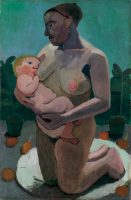
Paula Modersohn-Becker, Kneeling Mother with Child at Her Breast, 1906
(image ©Paula-Modersohn-Becker-Stiftung; provided by Bremen/Nationalgalerie, Berlin)
The CAA Committee on Women in the Arts (CWA) curates a seasonal list of must-see exhibitions, screenings, projects, and talks. The CWA Summer 2024 picks highlight individual artists’ observant and expressive art practices that reveal personal and collective stories about the earth, the environment, communities, and members of lesser known, historically marginalized groups.
UNITED STATES
ACCESS: An Ordinary Notion
June 15–July 13
Arc Gallery, San Francisco
ACCESS: An Ordinary Notion, a national juried exhibition, is proud to present artworks that tell individual stories and advocate for social justice and human rights. Inspired by Alice Paul, who introduced the Equal Rights Amendment in 1923, this collection showcases art in all media that illuminate the ongoing conversation around race, women’s and LGBTQIA+ rights, reproductive rights, disparities in global wealth, power, access to food, water, shelter, education, health services, disability access, child and elder care, along with immigration issues, climate change, and criminal (in)justice.
Beate Kuhn: Turn
June 29–December 1
Carnegie Museum of Art, Pittsburgh
Beate Kuhn (1927–2015) was a German sculptor known for her rhythmic ensembles of deconstructed, ceramic forms such as discs, cylinders, cones, and spheres. She also channeled beautiful and sublime aspects of nature with formal allusions to succulents, seeds, mushrooms, and invertebrate animals. Like the atonal music she favored, Kuhn’s sculptures were both alluring and disquieting.
Calida Rawles: Away with the Tides
June 27–February 23, 2025
Perez Art Museum Miami
Calida Rawles envisions water as a space for Black healing. Merging hyperrealism, poetic abstraction, and the symbolism of water, Rawles creates unique portraits of Black bodies submerged in and interacting with bodies of water. Water functions as an element that signifies both physical and spiritual healing, as well as historical trauma and racial exclusion. Rawles delves into the particular experience of Black people in Overtown, a Miami neighborhood that went from a cultural and commercial hub for Black people to a subject of gentrification, systemic racism, and mass displacement. Rawles photographs some of her subjects in natural waters at Virginia Key Beach, which was once racially segregated. Rawles probes the Atlantic’s history as the site of the transatlantic slave trade. The work critically engages with Miami’s water-entwined climate and mines Overton’s history of beauty, oppression, and resilience.
Jen Liu: GHOST__WORLD
Through August 24
/ (Slash), San Francisco
Jen Liu: GHOST__WORLD features new videos, augmented reality, paintings, and glass sculptures. GHOST__WORLD originates in Liu’s long-term engagement with labor activism and women electronics workers in South China. This project takes up last year’s social media phenomenon of “frog mothers,” unlicensed street vendors in China wearing inflatable frog costumes and selling frog-shaped balloons.
Jennifer Rochlin: Paintings on Clay
Through July 12
Hauser & Wirth, New York City
Rochlin’s three-dimensional compositions coalesce largely without planning. Sketched in advance, the shapes of her vessels ultimately depart from classical form and symmetry through a laborious hand-building process that encourages distortion. The vessels’ physicality prompts viewers to trace their curves and walk around them to follow the sequence of vignettes that travel their circumferences.
LaToya Ruby Frazier: Monuments of Solidarity
Through September 7
MoMA, New York
LaToya Ruby Frazier: Monuments of Solidarity highlights the artist’s role as a social advocate and connector of the cultural and working classes in the twenty-first century. For this exhibition, Frazier has reimagined her diverse bodies of work as a sequence of original installations that she calls “monuments for workers’ thoughts,” which address the harmful effects of industrialization and deindustrialization, the healthcare inequities facing Black working-class communities in the Rust Belt, the ongoing water crisis in Flint, Michigan, and the impact of the closure of a General Motors plant in Lordstown, Ohio. Monuments of Solidarity celebrates the expressions of creativity, mutual support, and intergenerational collaboration that persist in light of these denials of labor, human, and civil rights. As a form of Black feminist world-building, these nontraditional “monuments” demand recognition of how women and people of color have contributed and continue to contribute to histories of labor and the working class.
Leilah Babirye: We Have a History
June 22–June 22, 2025
de Young Museum, San Francisco
Leilah Babirye is known for her ambiguously gendered sculptures in ceramic, wood, and discarded objects. Reclaiming ceramic and wood-carving traditions from western and central Africa, she creates her ceramics by hand, firing them with glazes, while she whittles, scorches, and burnishes her wood sculptures. She then adorns them with wire, bicycle chains, inner tubes, and other found materials. The sculptures, which range in scale from towering totemic forms to busts, talismans, and masks, are portraits of her LGBTQ+ community. Babirye’s work speaks to the power of reclaiming personal and cultural identity through artistic practices, historical narratives, and cultural traditions.
Nampeyo and the Sikyátki Revival
Through September 15
de Young Museum, San Francisco
During her lifetime, Nampeyo (ca. 1860–1942) was, and remains today, perhaps the most renowned potter from the American Southwest. The single-gallery exhibition highlights Nampeyo’s work, juxtaposed with examples of Hopi pottery from her time. Exquisite ceramics made by ancestral Hopi artists demonstrate Nampeyo’s sources of inspiration, and artworks by four generations of her descendants attest to the master potter’s enduring legacy.
Nina Chanel Abney: LIE DOGGO
Through October 5
The School | Jack Shainman Gallery, Kinderhook, NY
LIE DOGGO spans Nina Chanel Abney’s creative practice, uniting a new series of paintings with collages, site-specific murals, an immersive digital art installation, and the debut of a new body of sculpture. Paying homage to the sophisticated color theories of Matisse, continuing the legacy of cubists, and connecting with the sensibilities of Harlem Renaissance greats Douglas and Lawrence, Abney brings these historical movements into contemporary pertinence. The exhibition’s title, LIE DOGGO, a phrase meaning to remain inconspicuously in wait, suggests a strategic invisibility and biding one’s time, reflecting on when to observe and when best to act. Abney challenges the viewer to explore the vast expanse that lies between what is said and what remains silent.
Paula Modersohn-Becker: Ich Bin Ich / I Am Me
June 6–September 9
Neue Galerie, New York City
+
October 12–January 12, 2025
The Art Institute of Chicago
Paula Modersohn-Becker (1876–1907) is a major figure in the history of German Expressionism. In the course of her brief career – which was cut short at the young age of 31 because of a postpartum embolism – Modersohn-Becker produced more than 700 paintings and over 1,000 drawings. She created many self-portraits, including the first nude self-portraits known to have been made by a woman. Many of these works focused on her pregnancy, another first among Western women artists. The artist first became known in part through her letters and diaries, including correspondence with her close friend, the German poet Rainer Maria Rilke. The exhibition is the first collaboration between Neue Galerie New York and the Art Institute of Chicago, to which the exhibition will travel following its debut at the Neue Galerie.
Simone Leigh
Through January 20, 2025
LACMA and the California African American Museum, Los Angeles
This exhibition is the first comprehensive survey of Leigh’s work. Twenty years of the artist’s production across ceramics, bronze, video, and installation are displayed in a show organized by the ICA Boston and co-presented by LACMA and the California African American Museum. Leigh’s practice, which regularly explores the interiority of Black femme life, can be seen in all its iterations at this latest exhibition, including pieces from the artist’s 2022 Venice Biennale presentation.
Samia Halaby: Eye Witness
June 29–December 15
Eli and Edythe Broad Art Museum, Michigan State University, East Lansing
Samia Halaby: Eye Witness follows Samia Halaby’s creative journey to experiment with how painting conveys her experiences and reflects how she sees the world around her. Halaby’s paintings, which range from miniature to monumental, 2D to 3D, and monochrome to multicolor, are notably shaped by her experiences and shift accordingly throughout her itinerant career across the Midwest, the East coast, and the Arab world. Halaby also explores how technology can enhance and transform painting. Halaby’s paintings reflect the life of a witness, one we are invited to take part in by looking slowly and closely at the artist’s work.
Sonya Clark: We Are Each Other
Through September 22
Museum of Arts and Design (MAD), New York City
Highlighting thirty years of artmaking dedicated to the Black experience in America, Sonya Clark: We Are Each Other is the first comprehensive survey of the communal art projects that form the heart of the artist’s pioneering creative practice. Accompanied by a selection of Clark’s photographs, prints, and sculptures, the exhibition features five of Clark’s large-scale, collaborative projects, including her barrier-breaking The Hair Craft Project (2014) and the ongoing performance, Unraveling.
Tanya Lukin Linklater: Inner blades of grass (soft) inner blades of grass (cured) inner blades of grass (bruised by the weather)
Through August 21
Wexner Center for the Arts, Ohio State University, Columbus
Lukin Linklater’s perception of time and place comes across in her sculpture, installation, rehearsals, video, works on paper, and writing. Her practice is inspired by her upbringing in the Kodiak archipelago of Alaska. The exhibition’s title is informed by an interview with the late Sugpiaq cultural worker Eunice von Scheele Neseth and a poem by Oglala Lakota poet Layli Long Solider. Describing grass in different states references the procedures that women of Kodiak Island follow when harvesting and processing plant material used to weave baskets. The imagery evoked by the words also asks viewers to consider observation and touch in the acts of restoration and repair.
Tolia Astakhishvili: between father and mother
Through August 12
Sculpture Center, Long Island City, New York
For more than two decades, Tolia Astakhishvili has worked across sculpture, drawing, painting, sound, and video. At scales that both augment and seemingly disappear into gallery spaces, Tolia’s environments posit architecture as an unfixed and transforming entity shaped by those who live through it. At the same time, her sculpture attends to disavowed space and the overlapping markers of use, authorship, and social position that produce different settings of decay.
Lynn Hershman Leeson: Moving-Image Innovator
Film series
Through June 20
MoMA, New York
Over five decades, Lynn Hershman Leeson has produced work that probes and plays with the complex relationship between humans, technology, and social structures. Her videos navigate the fluid space between perception and truth, exposing our collective and individual biases. The immediacy and urgency of video allowed her to assume an artist-as-activist stance, portraying the lives of women who were barely visible in the moving-image art scene of the time. This retrospective features Hershman Leeson’s complete, four-part “Cyborg Series,” including Cyborgian Rhapsody – Immortality (2023), which was written, performed, and designed by an artificial intelligence chatbot. A special conversation on June 8 brings together Lynn Hershman Leeson, Eugenia Kuyda, founder of the Replika AI app, and the chatbot named Echo.
- June 7, 7:00 p.m.: !Women Art Revolution (2010)
- June 8, 4:30 p.m.: Cyborgian Rhapsody – Followed by a discussion
- June 8, 7:00 p.m.: Conceiving Ada (1997) – Introduced by Lynn Hershman Leeson
- June 11, 7:00 p.m.: Teknolust (2002)
- June 12, 7:00 p.m.: Strange Culture (2007)
- June 13, 7:00 p.m.: Tania Libre (2017)
- June 14, 7:30 p.m.: The Complete Electronic Diaries (1984–2019)
- June 15, 7:00 p.m.: Vertighost (2017); Longshot (1999)
- June 17, 6:30 p.m.: No Words (2023); Seeing is Believing
MEXICO
Ursula Biemann, Becoming Earth
Through October 13
Museo de Arte Contemporáneo (MUAC), Mexico City
Swiss artist Ursula Biemann proposes to rethink the epistemic roots of our relationship with the Earth. In her field research, she explores the ecologies of forests and oil as well as the consequences of extractivist projects on global ecosystems and the climate. The artist interweaves vast cinematographic landscapes in her multilayered videos with documentary images, sci-fi poetry, and academic findings.
CANADA
Rooted Knots/Blended Threads
Through July 6
Sur Gallery, Toronto
Mestiza hybrid identities, as Gloria Anzaldúa argues, are multilayered. They stretch in all directions, from past to present, vertically and horizontally, chronologically, and spatially. The artists in this exhibition use textiles and threads symbolically and metaphorically referencing ties to ancestral traditions while highlighting transformation as diasporic subjects. This exhibition aims to explore parallel frameworks between the art produced by these women textile artists and the mestiza female body that endures the complexity of racial and patriarchal oppression, forms of invisibility and exclusion, and an imposed coloniality, which shapes their position and condition in Canada. The common thread that ties the artists Claudia Gutiérrez, Ruth Mora Izturriaga, Ixchel Suarez, and Sarabeth Triviño together is their ability to transmit meaning behind the slow-paced methodology of working with textiles as a space for personal meditation, sharing of traditional knowledge, and the experience of collective healing.
SOUTH AMERICA
Ebecho Muslimova: Rumors
Through August 10
Mendes Wood, São Paulo
+
Ebecho Muslimova: Whispers
June 7–July 26
Bernheim, Zurich
Rumors and Whispers is a two-part presentation of Ebecho Muslimova’s recent series of paintings across Mendes Wood DM’s São Paulo gallery and Bernheim Gallery in Zürich. A transatlantic game of telephone, the exhibition first opens in Brazil with Muslimova’s Rumors suite, followed two weeks later by Whispers in Switzerland, each painting a response to one at the previous opening. Like the children’s game telephone, this body of work tracks the shifting persona of Muslimova’s signature character Fatebe. An unabashedly liberated personality, Fatebe appears across the paintings in different forms, mischievously bursting into some frames and, in some instances, physically embodying a portal between them, translating or responding to a previous painting.
Tania Candiani. Ofrenda
Through September 1
Museo de Arte Moderno de Medellin, Colombia
This is Mexican artist Tania Candiani’s first large-scale exhibition in Colombia and brings together a series of works based on sound, artisanal processes, and rivers, which speak of different latitudes but also, above all, of Medellin. Some of her works lead through paths that merge the Earth with its human and non-human inhabitants, bringing them closer and questioning the meaning each one gives to their brief passage through this planet. Vaguely structured around Preludio cuántico, a two-channel octophonic video that connects mystical, scientific, and aesthetic visions of the universe, Ofrenda poses -from sound and matter- a series of reflections on that which is primordial, both audible and palpable.
ASIA
Rei Naito: come and live – go and live
June 25–September 23
Tokyo National Museum
Rei Naito has been creating works based on the question, “Is our existence on the Earth a blessing in itself?” Her newest exhibition “come and live – go and live” was created through her encounters with the Tokyo National Museum’s collection and architecture. In her work, life and death are explored as something inseparable. The exhibition spaces are illuminated by natural light and transformed by weather and time.
EUROPE & UK
Anne Imhof: Wish You Were Gay
June 8–September 22
Kunsthaus Bregenz, Bregenz, Austria
Wish You Were Gay is simultaneously a personal survey and an all-new body of work that reflects on and further develops some core elements constituting Imhof’s repertoire of artistic expression. Wish You Were Gay includes bas-reliefs, large-scale oil paintings, sculptures, stage elements, stadium lighting, and new video works made of archival footage from her origins as an artist coming of age in underground subcultures. Imhof explores notions of finitude, reality and artifice, chance and fate, as well as absence and presence set against a backdrop of post-apocalyptic isolation.
The Deep West Assembly Cauleen Smith
June 14–September 15
Astrup Fearnley Museet, Oslo, Norway
Astrup Fearnley Museet presents a solo exhibition of work by multidisciplinary American artist and filmmaker Cauleen Smith. In producing her films, videos, live-feed projections, and slide projections, Smith deploys original research and techniques of improvisation, arrangement, and live performance and narration, creating works that share affinities with theater and visual art. Smith merges film with music and poetry, longstanding forms of Black expression. Smith’s most recent film The Deep West Assembly delves into the concepts of geological time and Blackness as camouflaged in images, songs, and words by Black and Brown creators (after thinkers such as Suzanne Césaire). Incorporating images of geological formations such as lava caves, calderas, and salt domes, as well as human-made landforms such as ancient Choctaw burial mounds, The Deep West Assembly paints a view of the American South as a horizontal “Deep West” (a term borrowed from poet Wanda Coleman).
Giantesses (Bożenna Biskupska, Urszula Broll, Ewa Ciepielewska, Katarzyna Rotkiewicz-Szumska, Ewa Zarzycka)
Through September 8
BWA Wrocław Główny Gallery, Wrocław, Poland
Giantesses is an exhibition featuring five artists connected in various ways to Lower Silesia. Although they use different media – from painting, large-scale sculpture, photography, and video to performance art and more ephemeral works – the artists have many things in common. Their biographies share a life-creating ethos: dedication to collective work, creation of art spaces, and development of artistic communities. The title of the exhibition refers to a rock formation called the Giantesses in the Ślęża massif, which is a crucial mountain in Lower Silesia due to its location, the beauty of its landscape, and its history, which dates to pre-Slavic times when it was a place of spiritual practices and sun worship.
Mari Chordà: Mari Chordà . . . And Many Other Things
July 5–January 12, 2025
Museu d’Art Contemporani de Barcelona
Mari Chordà uses image, language, and social action as materials in her work. An active feminist observer, her multidisciplinary art practices emerged as a response to the oppressive context of the Franco regime but have remained throughout time in a society that still has to restore the visibility and recognition of women’s work. As a pioneer of her generation to express free feminine sexuality, Chordà addressed pleasure, maternity, and lesbian relationships in her painting and her poetry. As a student in 1964, she painted her first vaginal painting. She paints the body fluids, secretions, sexual organs, or coitus with forms and colors akin to the sensibility of pop art.
Martha Jungwirth
June 7–September 22
Guggenheim Bilbao, Spain
This exhibition presents seventy works, starting with Jungwirth’s earliest drawings that explore the boundary between representation and abstraction, and concludes with her recent series inspired by Francisco de Goya and Édouard Manet. Organized thematically, it features drawings, watercolors, oil paintings, and artist books on various substrates, including handmade paper, accounting books, cardboard, and more. These unconventional materials introduce unpredictability into Jungwirth’s creative process, enhancing the spontaneity and dynamism of her work. This artistic spectrum ranges from paintings filled with dense strokes to those marked by spare brushwork, exploring the tension between abstraction and the physical world.
Maya Minder: Mountains O’Things
June 21–July 20
Gallerie Glaab, Bern, Switzerland
“This is how cooking transforms us” is a framework that Maya Minder weaves like a thread through her work. Cooking serves as a metaphor for human transformation from raw nature to cooked culture, and she connects it with the evolutionary ideas of a symbiotic coexistence between plants, animals, and humans. She creates interrelations between human objects of use and the animism of nature. A table of diversity that still needs to be digested. Following the biohacker, maker, and thirdspace movements, she uses grassroots ideas, safe zones, and citizen science in her field to enable collective storytelling through food and cooking.
Paula Rego: Manifesto
Through October 6
Luís I Foundation, Cascais Cultural Center, Cascais, Portugal
Between the 1960s and 1970s, Paula Rego’s experimental figurative approach served the need to express her emotions, reflecting feelings of anxiety, fear, and anguish shared by all Portuguese who aspired to political change. The plurimaterial technique that she then developed, using heterogeneous materials—paints, paper cut and glued onto the canvas—and the themes addressed, which suggest a critical and challenging position concerning authority, manifest an attitude of political resistance through creative practice. Her 1965 first solo exhibition created a space for dissension, confrontation, and freedom. Paula Rego: Manifesto continues the critical revisitation, through the artist’s particular perspective, of striking themes from the recent history of Portugal.
Selma Selman: Flowers of Life
June 20–September 15
Shirn Kunstshalle, Frankfurt
Selma Selman describes herself as “the world’s most dangerous artist.” Together with her family, she cannibalizes former status symbols, such as Mercedes-Benz cars, to acquire the few precious metals that are still usable. The spoken performances by this artist with a Romani background are usually loud, giving angry expressions to her urge to reverse power relationships. Selman’s art describes through a variety of media autobiographical experiences of discrimination, violence, patriarchy, and sexism. With the poetic title Flowers of Life, an installation consisting of orange peel, Selman refers to her family’s means of livelihood since they collect and sell scrap metal. The video Crossing the Blue Bridge (2024) is based on memories of Selman’s mother, who had to cross a bridge in Bosnia with her daughter in 1994 during the Bosnian War. Selman takes these experiences as a starting point to situate herself as a feminist activist artist who campaigns internationally for her community.
SPLASH: eco + hydrosexuals unite! | Annie Sprinkle, Beth Stephens, Justyna Górowska, Ewelina Jarosz
June 15–September 14
lokal_30, Warsaw
The exhibition explores one of humanity’s most significant and challenging relationships: the bond between us and the environment. It proposes a dialogue between the ecosexual and hydrosexual movements, creating transcultural connections crucial for caring about diverse, multispecies futures. The exhibition is the first comprehensive presentation of Annie Sprinkle and Beth Stephens’s achievements in Poland in collaboration with the artistic-research duo cyber_nymphs, also known as Justyna Górowska and Ewelina Jarosz.
Tapta: Flexible Forms
July 20–November 3
Muzeum Susch, Susch, Switzerland
Tapta (pseudonym of Maria Wierusz-Kowalska) was born in Poland in 1926 and came to Belgium as a political refugee with her husband after participating in the 1944 Warsaw Uprising. They moved to the Belgian Congo (now the Democratic Republic of Congo), where they lived from 1950 to 1960. After returning to Belgium, Tapta swiftly established herself as an important member of a new generation of artists who sought to redefine sculpture by using textiles and other flexible materials as sculptural elements. In the 1980s, she changed her materials from woven textiles and cords to neoprene. With this industrially produced rubber, she created large black installations that still represent her idea of “flexible sculpture.” Tapta: Flexible Forms is the first large-scale retrospective dedicated to the artist outside of Belgium. The title of the exhibition, Flexible Forms, refers to the central concept of her oeuvre: the creation of sculptures that interact with the exhibition space and the viewer through their flexible forms.
Toyin Ojih Odutola: Ilé Oriaku
June 7–September 1
Kunsthalle Basel, Switzerland
For her first institutional solo exhibition in Switzerland, Nigerian-born artist Toyin Ojih Odutola presents a captivating body of newly drawn work. These impressive artworks explore the effects and various forms of language. In those moments when words seem insufficient, other forms of expression emerge.
FEMIGRAPHIC: Irena Keckes, Martyna Rzepecka, Ana Vivoda, Katarzyna Zimna
June 6–September 1
Galeria Willa, Lodz, Poland
Femigraphic is an exhibition of an international collective of artists working in printmaking, which oscillates between direct experience and its “reproduction,” touch and distance, repetition and change. The exhibition shows printmaking as a thoroughly contemporary medium of play with tradition, free from the compulsion to reproduce – free from the “tyranny of edition.” The theme of the female body and the presence of the body in the graphic process also appear directly. The show attempts to break out of the pattern of close-circle, academic hermetic relationships on which Polish graphics are based. Graphics are still masculinized, hence the idea of spotlighting activities carried out by women and representatives of various artistic centers (Poland, Croatia, and Guam/USA).
MIDDLE EAST
Ahaad ALamoudi: Moving Mountains
Through October 26
Hayy Jameel, Jeddah, Saudi Arabia
Ahaad Alamoudi is a Saudi artist whose work addresses history, ethnography, and representation. The show brings together works from the last eight years, with a new commission, Moving Mountains, as its centerpiece. This ambitious new work continues Alamoudi’s expansive exploration of rapidly changing social and cultural environments, situating Saudi’s natural and urban landscapes as sites of possibility where both individual and collective attempts to do the seemingly impossible are imbued with humor, absurdity and, at times, hopefulness. Through video, performance, and installation, Alamoudi negotiates her ambitions and forces beyond her control to explore how effort is inspired, transmitted, embodied, enacted, and ultimately navigated.
OCEANIA
mudunama kundana wandaraba jarribirri: Judy Watson
Through August 11
Queensland Art Gallery, South Brisbane, Australia
For more than four decades, Judy Watson has created powerful, ethereal works of art channeling the stories of her family’s Waanyi Country in northwest Queensland. mudunama kundana wandaraba jarribirri: Judy Watson is a comprehensive survey of the renowned Queensland artist’s incisive meditations on colonial, social, and ecological concerns. The exhibition includes 130 works, across painting, prints, sculpture, installation, and video, from an artistic practice centered on truth-telling around the environment, historical government policy affecting Indigenous Australians, and institutions that collect First Nations’ cultural material and remains.
CWA Picks: Spring 2024
posted by CAA — Mar 13, 2024
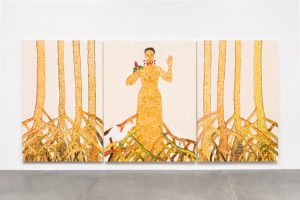
Rosana Paulino, Garça Branca from the Mangrove-Women series, 2023
The exhibitions, screenings, projects, and talks selected for CWA’s Spring Picks hint at the fleeting, ephemeral nature of memory and intimacy. The creatives highlighted here have left their mark, interpreting and imbuing their materials with meaning, often leaving behind evidence of their process.
UNITED STATES
Christina Fernandez: Multiple Exposures
Through April 28
Art on Hulfish Gallery, Princeton, NJ
Princeton University Art Museum’s Art on Hulfish presents a survey of work by Christina Fernandez, a Los Angeles–based artist who has spent more than thirty years conducting a rich exploration of migration, labor, gender, and her Mexican American identity through photography. Whether staged or candid, Fernandez’s photographs record touch and mark making, engaging the medium’s distinct ability to convey surfaces—the surfaces of bodies, architecture, and the images themselves. Multiple Exposures traces the development of the artist’s work from the late 1980s to now.
April 4–August 4
MIT List Visual Arts Center, Cambridge, MA
Since 2015, the Zagreb-born Miletić has worked almost exclusively with hand-produced textiles across several ongoing series.
Her Materials series is comprised of works hand woven on a 1970s loom. As an extension of her formal training as a photographer, their idiosyncratic shapes and color-schemes are based on Miletić’s snapshots of temporary repairs to buildings and objects in urban public spaces. Though never exhibited, her photographs of responsive, ad-hoc constructions become templates for seemingly abstract textile pieces. Her meticulous and time-consuming use of hand work to document the ephemeral repairs reproduces this ethos of care and provides a slowness and material intimacy that Miletić found lacking in photography. Across her various series, Miletić also calls attention to the gendered associations of textile craft, subtly relating forms of historically undervalued labor, like the “women’s work” of weaving, to other narratives of social and economic struggle and the larger political forces that give shape to them.
Through June 15
Nora Eccles Harrison Museum of Art, Utah State University, Logan
Jane Catlin’s career as an artist and teacher has lasted more than forty years. During that time she has produced figural paintings to semi-abstract images of biological forms and processes. Throughout her career, Catlin’s style and content have shifted due to the profound influence of her travels through Japan, Korea, Africa, and Canada. This overview reveals her fascination with biology, ecology, and the environment. The mysterious imagery that results from her visual meditations evokes our mutating world and serves as a reminder of both the beauty and fragility of nature. This exhibition offers a unique opportunity to see some of her most significant works presented together for the first time.
Joan Jonas: Good Night, Good Morning
March 17–July 6
Museum of Modern Art, New York
Joan Jonas creates meditations on bodies, space, time, and nature. As she has explained, “The performer sees herself as a medium: information passes through.” The most comprehensive retrospective of Jonas’s work in the United States, this exhibition provides new insights into the artist’s process, unprecedented access to archival materials, and fresh historical perspectives on Jonas’s work. Drawings, photographs, notebooks, oral histories, film screenings, performances, and a selection of the artist’s installations, drawn from MoMA’s collection and institutions around the world, will trace the development of Jonas’s career, from works made in the 1960s and 1970s exploring the confluence of technology and ritual to more recent ones dealing with ecology and the landscape.
Joyce J. Scott: Walk a Mile in My Dreams
March 24–July 14
Baltimore Museum of Art
This fifty-year career retrospective celebrates one of the most significant artists of our time. Best known for her virtuosic use of beads and glass, Scott’s work across varying media beguiles viewers with beauty and humor while confronting racism, sexism, ecological devastation, and complex family dynamics. The exhibition includes more than 120 objects ranging from woven tapestries and soft sculpture from the 1970s and audacious performances and wearable art in the 1980s to sculptures of astonishing formal ingenuity and social force from the late 1970s to the present moment.
On April 11, 6:30–8:30 p.m. Joyce J. Scott will appear with longtime collaborator Kay Lawal-Muhammad, in a conversation moderated by Tracey Beale, BMA Director of Public Programs.
May 3–August 11
The Power Plant, Toronto
June Clark: Witness is the first survey in Canada of the Toronto-based artist June Clark, who, since the late 1960s, has developed a unique and groundbreaking practice spanning photo-based work, text, collage, installation, and sculptural assemblages. In this deeply personal exhibition, she explores how history, memory, and identity—both individual and collective—have established the familial and artistic lineages that shape her work.
Witness brings together four significant bodies of work that stretch from the 1990s to the present, many of them seen here for the first time. These include her iconic installations Family Secrets (1992) and Harlem Quilt (1997); a series of photo-based works from 2004 titled 42 Thursdays in Paris; Perseverance Suite (a new project); and Homage, a collection of sculptural assemblages that, in Clark’s words, “gave me permission to be the artist I am today.”
June Clark: Witness will be presented in tandem with another solo exhibition of the artist’s work at the Art Gallery of Ontario titled June Clark: Unrequited Love.
Thorugh July 21
Harvard University Art Museums, Cambridge, MA
LaToya M. Hobbs: It’s Time presents the series Carving Out Time (2020–21), a life-size suite of woodcuts by the Arkansas-born, Baltimore-based artist. Unfolding over five scenes, the work depicts a day in Hobbs’s life with her husband and children. Hobbs shares the labor and intimacy of her private life in these prints, centering the negotiations she brokers daily to balance her manifold responsibilities—as a wife, mother, educator, and artist. The series is also a powerful statement about her influences and self-fashioning as an artist: references to paintings, sculptures, and prints by prominent artists such as Elizabeth Catlett, Alma Thomas, Valerie Maynard, and Kerry James Marshall appear throughout. Carving Out Time is a part of Hobbs’s ongoing Salt of the Earth project, which she characterizes as “the personification of Black women as salt in relation to their role as preservers of family, culture and community.”
Lauren Lee McCarthy: Bodily Autonomy
Through May 25
Mandeville Art Gallery, University of California San Diego, La Jolla
Bodily Autonomy is Lauren Lee McCarthy’s largest US solo exhibition to date. For the past fifteen years, McCarthy has worked in performance, video, installation, software, artificial intelligence, and other media to address how an algorithmically determined world impacts human relationships and social life. The show brings together two major series of works—Surrogate and Saliva—to examine the current state of bio-surveillance in times of rapid technological development and increased corporate and government surveillance.
Loie Hollowell: Dilation Stage
Through April 20
Pace Gallery, New York
Hollowell will present ten new pastel drawings that document the dilation stage of labor. Displayed sequentially on a rounded wall, these drawings feature depictions of Hollowell’s own pregnant abdomen, rendered to scale. Below each belly is a circle the exact size of the effaced cervix as it expands. The cervical “circles” at the bottom of each drawing seem to pulse as the series progresses, culminating in a blazing cadmium red.
In addition to these drawings, the exhibition will include a unique birthing bench that Hollowell created collaboratively with her husband, sculptor Brian Caverly. The birthing chair has been used by women in labor throughout millennia and the rendition here, which visitors are invited to sit on, is created not just for the birther, but also for the partner, midwife, doula, doctor, or any other witness to the transcendent journey of birth.
Dilation Stage will coincide with Hollowell’s first museum survey, on view at the Aldrich Contemporary Art Museum in Ridgefield, CT, through August 11.
Modern Art for an Old Tale: Fuku Akino’s Illustrations for “The Dwarf Pine Tree”
Through July 31
Zimmerli Art Museum, Rutgers University, New Brunswick, NJ
This exhibition presents more than twenty illustrations for The Dwarf Pine Tree by Fuku Akino (1908–2001), a Kyoto-based painter and teacher who was one of Japan’s most prominent woman artists during her lifetime. Published in 1963, The Dwarf Pine Tree is a modern retelling of a Japanese folk tale whose main character is a pine tree, an important symbol in Japanese culture representing love and endurance. The book is one of several collaborations between Akino, the author Betty Jean Lifton, and the editor Jean Karl, who promoted her vision to publish complex and culturally diverse stories for young American readers such as those written by Lifton, an American resident of Japan, and illustrated by Akino.
Through July 7
Brooklyn Museum, New York
“What does a Black person look like today in those places where Africans were once sold, a century and a half ago?” asks artist Nona Faustine (b. 1977). Using her own body, she interrogates this question in her photographic series White Shoes. Forty-two self-portraits show Faustine standing in sites across New York City, from Harlem to Wall Street to Prospect Park and beyond, that are built upon legacies of enslavement in New York—one of the last Northern states to abolish slavery. On her feet are a pair of sensible white pumps, which speak to the oppressions of colonialism and assimilation imposed on Black and Indigenous peoples locally, nationally, and globally. Otherwise nude, partially covered, or holding props, Faustine is at once vulnerable and commanding, standing in solidarity with ancestors whose bodies and memory form an archive in the land beneath her shoes. White Shoes is the artist’s first solo museum exhibition and the first complete installation of this consequential series.
April 11–September 22
Madison Square Park and Inwood Hill Park, New York
Seed explores the personal and collective experiences that have influenced artist Rose B. Simpson’s life and work with a series of new large-scale sculptures appearing in two major public parks in Manhattan. In Madison Square Park, Simpson assembles seven monumental androgynous sentinel figures fabricated in steel with bronze adornments around a central sculpture of a young female figure emerging from the earth. In addition, two life-size bronze sentinels stand watch in Inwood Hill Park, a contested space in Native American history as the site where Dutch colonial governor Peter Minuit “purchased” Manhattan Island from the Lenape in 1626. This marks Madison Square Park Conservancy’s first collaboration with another New York City public park.
Sarah Maldour: Tricontinental Cinema
Through April 28
Wexner Center for the Arts, Ohio State University, Columbus
Tricontinental Cinema explores Maldoror’s five-decade career as a maker of revolutionary cinema, tracing her involvement with Black liberation movements in France, Africa, and the Caribbean. Through an immersive, multisensory landscape of films, photographs, poetry, and letters, the exhibition invites you to experience the full scope of Maldoror’s radical practice.
A legendary filmmaker, Maldoror completed more than forty-five shorts, documentaries, and feature films before her death in 2020. Many of these works rewrite the rules of films focusing on resistance and rebellion, casting women as protagonists in movements dominated by men.
The exhibition includes several large-scale works by contemporary artists, including a monumental fiber sculpture by renowned Canadian artist Kapwani Kiwanga. It also features a newly commissioned mural, painted on-site, from Paris-based artist Maya Mihindou. Framing Maldoror’s films and archives, these works form a constellation of Black and Afro-Surrealist practices while amplifying the continued resonance of her work today.
Through August 18
Nasher Sculpture Center, Dallas
Always attuned to the built environment, Sze’s new site-specific installations across three gallery spaces integrate painting, sculpture, images, sound, and video with the surrounding architecture to create intimate systems that reference the rapidly changing world. This extraordinary new exhibition will blur the boundaries between making and showing, process and product, digital and material ultimately to question how objects acquire their meaning.
Northern California Women’s Caucus for Art: The 6000 Circle Project
Through April 6
Arc Project Gallery, San Francisco
In collaboration with The Calling (artists Yasmin Lambie-Simpson, Chantelle Goldthwaite, and Sheila Metcalf-Tobin) and the Northern California Women’s Caucus for Art (NCWCA) chapter of the Women’s Caucus for Art (WCA), anyone interested in participating in this international art initiative is welcome! The 6000 Circle Project focuses on the circle as a symbol of balance and unity, a never-ending container of feminine energy and light. The Calling envisions 6000 circles created by a multitude of artists from around the globe. The 6000 Circle Project opens with more than 300 circles on the walls at Arc. Through the course of the exhibition, the public will be invited to make circles to add to the walls.
March 15, 6 –9 p.m.
MIT Bartos Theater, Cambridge, MA
Renowned Inuit lawyer Aaju Peter has led a lifelong fight for the rights of her people. But while launching an effort to establish an Indigenous forum at the European Union, Aaju finds herself facing a difficult, personal journey to mend her own wounds after the unexpected passing of her son. In this “powerful exploration of cultural trauma” (The Film Stage), director Lin Alluna follows alongside Aaju Peter as she strives to reclaim her language and identity after a lifetime of whitewashing and forced assimilation.
The screening will be followed by a Q&A discussion. Free and open to the public. Doors open at 5:30 p.m.
Panel: Vision is a Battlefield: Histories of Race and Media
March 26, 6:30 p.m.
Segal Theatre Center, CUNY Graduate Center, New York
How is our basic perception of the world influenced by concepts of racial identity? Join moderator Claire Bishop, professor of art history at the CUNY Graduate Center, for an illuminating discussion with the authors of four recent books exploring the intertwined histories of photography, media, and race. The panel features Brooke Belisle, associate professor of art at Stony Brook University, speaking on computational imagery and AI; Emilie Boone, assistant professor of art history at New York University, on Harlem Renaissance photographer James Van Der Zee; Monica Huerta, assistant professor of English and American studies at Princeton University, on the aesthetics of racial capitalism; and Nicholas Mirzoeff, professor of media, culture, and communication at New York University, on the visual politics of whiteness.
April 18, 6:30 p.m.
Segal Theatre Center, CUNY Graduate Center, New York
Natalie Dykstra’s Chasing Beauty is the vivid and masterful biography of Isabella Stewart Gardner—creator of one of America’s most stunning museums and a true American original. A wealthy Boston socialite at the turn of the twentieth century, Gardner was misunderstood for her eccentric lifestyle, but found her niche as a patron and friend to artists, including John Singer Sargent, who painted her portrait. Dykstra illuminates how the museum and its holdings can be seen as a kind of memoir created with objects, displayed per Gardner’s wishes, including not only masterwork paintings but tapestries, rare books, prints, porcelains, and fine furniture. Dykstra speaks about the new book with Rachel Cohen, author of A Chance Meeting: Intertwined Lives of American Writers and Artists.
MEXICO
War and Peace: A Poetics of Gesture
Through June 30
Museo Universitario de Arte Contemporáneo, Mexico City
Beatriz González is one of the most renowned living Latin American painters and one of the key references of her country’s culture. War and Peace: A Poetics of Gesture is a new review of Beatriz González’s work. This is the first monographic exhibition of the painter’s work to be held in Mexico: it will offer both an overview of her work and an original investigation of her approach to the figure and gestures as a vehicle for emotional communication.
CANADA
un/tangling, un/covering, un/doing
Through March 17
Surrey Art Gallery, British Columbia
From the moment of birth, hair takes on multifaceted meanings. Rooted within storytelling by families and communities, the politics of hair have been both intimately personal and profoundly social.
Artists from across Canada—including Audie Murray, Becky Bair, Wally Dion, Clare Yow, Sharon Norwood, Sarindar Dhaliwal, Karin Jones, Baljit Singh, Kiranjot Kaur, and Natasha Kianipour—offer reflections on how hair embodies the importance of culture. In this exhibition, artists employ compelling storytelling that express connections intertwined with familial teachings and their own informed experiences.
SOUTH AMERICA
March 22–June 10
Fundación Malba Museo de Arte Latinoamericano de Buenos Aires
This is the first comprehensive exhibition to be held outside Brazil of the work of Rosana Paulino (b. 1967). It includes works made between 1994 and 2024, and approaches her oeuvre from the concept of “Amefricana” as proposed by the Brazilian philosopher Lélia Gonzáles.
Paulino’s poetic interventions reinscribe the archives of the African diaspora in South America. They do so through constant dialogue between personal and historical archives, reconceptualizations of Brazilian art, interrogations of the matrixes of Western science, and through an approach to the circumstances of black women in Brazilian and Latin American societies. The exhibition includes five large installations, displayed together with drawings, engravings, and video organized into four conceptual hubs that are not separate zones, but rather axes of meaning that run through almost all of Paulino’s works.
ASIA
Jorinde Voigt and Xiyadie: 2.0
Through May 4
Gallery P21, Seoul
In 2.0 paper transcends its two-dimensional origins to become a silent narrator telling tales of delicacy, rebellion, and existence. The title of the show is tri-fold: the exhibition is the first in the gallery’s new “2.0” space; the show comprises the work of two artists; and the binary symbolism behind the numbers: 2, which represents existence and material, and 0, which represents absence or the subconscious. The overlap of these artists’ practices is predominantly material, but presenting them alongside one another brings out conceptual overlap, allowing alternate readings of each artist’s works. For both artists the fragility of each cut or fold becomes a poetic marker of time, capturing moments in the evolution of the artwork. Both artists, through their engagement with paper, participate in a form of archiving, be it of cultural narratives or conceptual explorations.
EUROPE & UK
May 17–August 11
Kunsthalle Basel
For her first institutional exhibition in Switzerland, the Swedish artist Ghislaine Leung (b. 1980) presents a new, site-specific project. Leung’s artistic practice is characterized by a rigorous, conceptual approach that often traces physical and economic circuits as much as institutional and societal mechanisms. The result are artworks—which she considers “events”—that emerge from her interest in the various structures underlying commodities, sites, and human relations.
Leung’s work is also on view in the Turner Prize 2023 Shortlist Exhibition at Towner Eastbourne, UK, and in a solo show at the Renaissance Society, Chicago, both through April 14.
March 20–June 9
Städel Museum, Frankfurt
Käthe Kollwitz (1867–1945) chose prints and drawings as her essential media, finding in them an independent visual language of great immediacy. This exhibition presents more than 110 works on paper, sculptures, and early paintings by the artist from the collection as well as from leading museums and Kollwitz collections. Surprising, unconventional works and selected sculptures will be presented together with loans from around Germany to highlight her independent pictorial language that was distinguished by an incisive immediacy to respond to the essential questions of humanity and address troubling topics.
A major Kollwitz retrospective exhibition will be on view at the Museum of Modern Art, March 31 – July 20.
Shahzia Sikander: Collective Behavior
April 20–October 20
Venice Biennale
Shahzia Sikander: Collective Behavior is the most comprehensive presentation of the artist’s work to date, bringing together more than thirty works made over the past thirty-five years, including new site-specific drawings and glasswork created for this exhibition.
Collective Behavior traces Sikander’s ever-evolving explorations of gender, race, and colonial histories. The exhibition includes her breakthrough work The Scroll (1989–90), which established her position at the vanguard of the neo-miniature movement. Collective Behavior also debuts new works by Sikander that respond to the architecture and history of the Palazzo Soranzo Van Axel, the city of Venice, and global histories of trade and artistic exchange.
Vanessa Bell: A Pioneer of Modern Art
May 15–October 6
The Courtauld Project Space, London
Vanessa Bell (1879–1961) was one of the leading artists associated with the Bloomsbury Group, the avant-garde assembly of artists, writers, and philosophers who pioneered literary and artistic modernism in Britain at the beginning of the twentieth century. This focused display will be the first devoted to the Courtauld’s significant collection of Bell’s work. It will include paintings such as her masterpiece A Conversation, as well as the bold, abstract textile designs she produced for the Omega Workshops, led by influential artist and critic Roger Fry in London, which aimed to abolish the boundaries between the fine and decorative arts and bring the arts into everyday life. The exhibition will highlight one of the most cutting-edge artists working in Britain in the early twentieth century.
MIDDLE EAST & NORTH AFRICA
Ana Mzzei: How to Disappear
Through April 20
Green Art Gallery, Dubai
How to Disappear marks the conclusion of Ana Mazzei’s ongoing project Love Scene Crime Scene, a three-part exhibition series centered around the fictional disappearance of a ballerina. In this latest installment presented by Green Art Gallery in Dubai, the Brazilian artist deepens the enigma by introducing a collection of bronze sculptures and oil paintings that leave the spectator wanting to play the role of investigator. Her sculptures, featuring half human, half animal creatures placed on raw concrete plinths, take center stage against an entire wall displaying approximately fifty paintings. The selection of paintings is divided into six themes: stage, vases, landscape, cages, beings, and the joker. Together, they form a vocabulary or alphabet of symbols put together in an attempt to illustrate how to disappear, if we ever wanted to.
Through December 6
Gulf Photo Plus Gallery, Dubai
Lara Chahine and Reem Falaknaz subvert a common documentary landscape in Swallow This! with works in photography and digital media. The exhibition explores the rampant pathologization of women’s bodies, where the politically absurd, visually surreal, and humorous converge. Drawing on the uncanny collective experience of womanhood, Chahine and Falaknaz veer into a kind of performance art, becoming the subjects of their own work at times.
Swallow This! weaves narratives where the clinical or scientific, the grotesque or bodily, the divine or occult coexist as contemporary reflections on a post-internet, Arab feminism. Both photographers seek to unpack “erotic capital,” where the strange is made familiar, and the familiar, strange.
OCEANIA
Through April 20
Michael Lett Gallery, Auckland
Material, action, trace. In myriad ways and with a diverse body of tools, Judy Millar applies and removes paint in order to explore embodied acts of making and how these enact particular forms of consciousness. With a palette made up of unexpected combinations of color, Millar often plays with the tension between background and foreground. Millar’s works are often large-scale, dwarfing those who encounter them, acting as a reminder that people belong to gestures and that painting can be a shift away from the self.
CWA Picks: Winter 2023/2024
posted by CAA — Dec 08, 2023
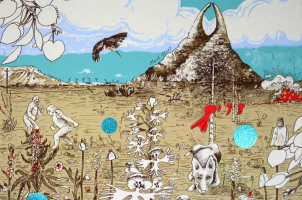
Diane O’Leary (Comanche), Watching the Weather, 1973, gouache on artist’s board, Great Plains Art Museum
The exhibitions selected for the CWA Winter Picks address issues of visibilities and invisibilities, particularly concerning artists coming from communities that have historically been marginalized for reasons that include race, ethnicity, region, religion, sexual identity, and gender. Works on view in the exhibitions on this list collectively evince a diverse set of creative practices, making visible the dynamic cultural production of groups that are often overlooked in art histories past and present. Artists represented include makers of previous eras whose works have been elided in accounts of their time periods as well as contemporary practitioners whose works grapple with continuing invisibilities—in the art world and beyond. The set of exhibitions on this Picks list underscore the critical importance of these artists and their works, insisting on their visibility.
Exhibitions have been organized by the regions where the hosting venues are located. These regions are by no means meant to be comprehensive and reflect Picks submissions by CWA members and colleagues. We are always looking to broaden the scope of these seasonal lists–please consider submitting exhibitions, lectures, grants, residencies, and other events and opportunities to future lists!
United States
Impressive: Antoinette Bouzonnet-Stella
October 21, 2023–October 20, 2024
National Museum of Women in the Arts, Washington, D.C.
Antoinette Bouzonnet-Stella’s ambitious series of 25 prints, The Entrance of the Emperor Sigismond into Mantua (engraved 1675; published 1787), reproduces an Italian Renaissance stucco frieze designed by Giulio Romano (1499 to 1546) for the Palazzo Te in Mantua. This exhibition examines the context in which Bouzonnet-Stella (1641 to 1676) created these engravings, commissioned by Jean-Baptiste Colbert, advisor to King Louis XIV. Her work at the French court was part of Colbert’s plan as vice-protecteur of the Royal Academy of Painting and Sculpture to promote a “French style,” based in classical art. Exquisitely executed, the engravings by Bouzonnet-Stella demonstrate how the power of classical art was borrowed from antiquity, employed in 16th-century Italy, and sought by the 17th-century French court
October 21, 2023–January 28, 2024
SFMOMA, San Francisco, CA
The first retrospective of Pacita Abad features more than 40 works. Over a 32-year career, the prolific artist made a vast number of artworks that traverse a diversity of subjects—from colorful masks to intricately constructed underwater scenes to abstract compositions—revealing visual, material, and conceptual concerns that still resonate today. Abad’s embrace of quilting and other kinds of needlework confounded critics, who dismissed her works as naïve, childlike, and ethnic. In fact, Abad’s multifaceted practice articulated a powerful material politics, reflecting her vision of a nonhierarchical world. This exhibition celebrates Abad’s bold self-determination, commitment to social justice, and radical artistic experimentation.
Colonial Colonnade by Doris Bittar
November 9, 2023–June 1, 2024
Arab American National Museum, Dearborn, MI
Pattern, repetition, and text are the foundation for Doris Bittar’s installation and other works in her first solo exhibition at the Arab American National Museum. Living in San Diego, Bittar draws inspiration from the Arab, Indigenous, and Latinx communities there. Colonial Colonnade is a visual, textual, aural, architectural, and cognitively rich space for interdisciplinary explorations of the Arabic language. In this site-specific installation, Bittar explores how colonization has affected language, among other aspects of culture, while creating a space for reflection and free movement.
Marta Minujín: Arte! Arte! Arte!
November 17, 2023–March 31, 2024
The Jewish Museum, NYC
Marta Minujín: Arte! Arte! Arte! Is the first survey exhibition in the United States of Marta Minujín, a defining force of Latin American art whose trajectory intersected with the major artistic developments of the postwar period. Arte! Arte! Arte! includes nearly 100 works organized to reflect Minujín’s bold experimentation over six decades, charting Minujín’s influential career in Buenos Aires, Paris, New York, and Washington, DC. Works include her pioneering, mattress-based soft sculptures; fluorescent large-scale paintings; psychedelic drawings and performances; and vintage film footage. Ephemeral works—happenings, participatory installations, and monumental public art—are presented through rarely seen photographs, video, and other documentation.
January 27–March 16, 2024
The Galleries at Moore College of Art and Design, Philadelphia, PA
(Re)FOCUS: Then and Now is an exhibition in two parts that aims to celebrate a historically significant 1974 feminist show that was called FOCUS by 1) bringing artworks created by the original 81 participating artists together in one space and 2) presenting new & recent work/s by Philadelphia-based artists who are exploring ideas of gender identity, representation, marginalization, social justice, violence, equality, and empowerment in their contemporary studio practices.
Taking Space: Contemporary Women Artists and the Politics of Scale
September 15, 2023–January 7, 2024
Montclair Art Museum, Montclair, NJ
Taking Space: Contemporary Women Artists and the Politics of Scale invites viewers to consider how space, size, scale, and repetition can be interpreted as political gestures in the practices of many women artists. Inspired by a 2021 exhibition at the Pennsylvania Academy of the Fine Arts (PAFA), Taking Space features 10 works from that original show alongside 13 works from the collection of the Montclair Art Museum. Together these works reveal the varied approaches of women artists for whom space is a critical feature of their work.
October 12, 2023–January 14, 2024
New Museum, NYC
Judy Chicago: Herstory spans Judy Chicago’s sixty-year career to encompass the full breadth of the artist’s contributions across painting, sculpture, installation, drawing, textiles, photography, stained glass, needlework, and printmaking. Expanding the boundaries of a traditional museum survey, the exhibition places six decades of Chicago’s work in dialogue with work by other women across centuries in a unique Fourth Floor installation. Entitled The City of Ladies, this exhibition-within-the-exhibition features artworks and archival materials from over eighty artists, writers, and thinkers.
Fruits of Labor– Reframing Motherhood and Artmaking
November 3–December 23, 2023
apexart, NYC
Fruits of Labor– Reframing Motherhood and Artmaking brings together women artists unpacking the vastly personal yet universal experience of mothering. Encompassing painting, sculpture, video, installation, photography and text-based work, the exhibition evokes motherhood thematically, but also explores the countless tangential ways in which this subject appears in artists’ practice, as a mode of work and being. The artists ultimately make a compelling argument: it is not motherhood that is in conflict with artmaking but the prevailing narratives defining both caregiving and artistic expression.
Making Her Mark: A History of Women Artists in Europe, 1400-1800
October 1, 2023–January 7, 2024
Baltimore Museum of Art, Baltimore, MD
Making Her Mark: A History of Women Artists in Europe, 1400-1800 aims to correct the broadly held but mistaken belief that women artists in Europe were rare and less talented than their male counterparts. With over 200 works, from royal portraits and devotional sculptures to embroidered objects, tapestries, costumes, wax sculptures, metalwork, ceramics, graphic arts, furniture, and more, Making Her Mark features objects from the 15th to 18th centuries that reflect the multifaceted and often overlooked ways that women contributed to the visual arts of Europe.
May 27, 2023–January 1, 2024
National Museum of the American Indian, Bowling Green, NY
Shelley Niro: 500 Year Itch is the first major retrospective of Shelley Niro’s paintings, photographs, mixed-media works, and films. Accessible, humorous, and peppered with references to popular culture, Niro’s art delves into the timeless cultural knowledge and generational histories of her Six Nations Kanyen’kehá:ka (Mohawk) community; addresses stereotypes associated with Native people, particularly women; and ultimately provides purpose and healing.
Raven Halfmoon: Flags of Our Mothers
June 25, 2023–January 7, 2024
The Aldrich Contemporary Art Museum, Ridgefield, CT
Working mainly in portraiture, Caddo Nation painter and sculptor Raven Halfmoon fuses Caddo pottery traditions (a history of making mostly done by women) with populist gestures—often tagging her work (a reference to Caddo tattooing). Her palette is specific and matches both the clay bodies she selects and the glazes she fires with—reds (after the Oklahoma soil and the blood of murdered Indigenous women), blacks (referencing the natural clay native to the Red River), and creams. Her works reference stories of the Caddo Nation, specifically her feminist lineage and the power of its complexities.
No Rest: The Epidemic of Stolen Indigenous Women, Girls, and 2Spirits
January 12, 2023–Extended through 2024
Mitchell Museum of the American Indian, Evanston, IL
The exhibition features 35 original works from 12 collaborating Indigenous artists and draws attention to the crimes perpetrated against Native women and two-spirit individuals in the United States. Rather than present the impacted individuals and communities as statistics, the Mitchell Museum employs an interdisciplinary approach that includes visual stories, interactive content, educational programming, community events, and an awareness campaign to humanize and honor the lives of Indigenous women and two-spirit individuals.
From Paintbrushes to Camera Lenses: Creative Women of the Great Plains, Part II
July 25–December 16, 2023
Great Plains Art Museum, Lincoln, NE
In fall 2018, the Great Plains Art Museum mounted From Paintbrushes to Camera Lenses: Creative Women of the Great Plains, an exhibition that highlighted exceptional work created by female artists from the museum’s permanent collection. To complement other female-focused exhibitions on view during fall 2023 (see below), the museum is organizing part two of this exhibition to showcase many recent acquisitions and other works from the collection by women that were not shown in the first installation.
Supporting Indigenous Sisters: An International Print Exchange
July 25–December 16, 2023
Great Plains Art Museum, Lincoln, NE
Supporting Indigenous Sisters is a print portfolio exchange involving sixteen artists from both Indigenous and non-Indigenous backgrounds. The portfolio was created to help begin conversations on many levels about missing and murdered Indigenous women. Each artist was asked to reach into their own experiences as a female walking this earth. The images from all of the artists advocate for change and for voicing this dark present history.
Threads & Trails: Contemplations of Our Herstories
July 25–December 16, 2023
Great Plains Art Museum, Lincoln, NE
Threads & Trails: Contemplations of Our Herstories is a collaborative exhibition created by five female-identifying artists who connect their personal histories to the conquest of the American West and Indigenous dispossession.
November 3–December 23, 2023
DOCUMENT, Chicago, IL
Natani Notah is a Diné (Navajo) interdisciplinary artist whose practice explores contemporary Native American existence through the lens of Indigenous Feminism. In Thoughts on Being Thrown, Notah connects maps, bodies, and objects to reflect on the larger social issues that repeatedly intersect the lives of women and men alike.
Form, Growth, and Variation: The Experimental Prints of Helen Phillips
November 16, 2023–February 24, 2024
Wright Museum of Art, Beloit College, Beloit, WI
California-born sculptress Helen Phillips found printmaking in the 1930s at Stanley William Hayter’s Atelier 17 in Paris. Though she remained primarily a sculptor, this exhibition chronicles her body of intaglio work—and it is the first solo exhibition of Phillips’s work in the US. From her early, transformative years in Paris, through her move to New York in 1940—when she became a mother—and back to Paris in the 1950s where she produced daring work in color, the prints showcase the artist’s constant affinity to three dimensions, growth in printmaking, and experimentation in line and color.
Nancy Baker Cahill: Through Lines
October 28, 2023–May 19, 2024
Georgia Museum of Art at the University of Georgia, Athens, GA
This solo exhibition highlights the artist’s interdisciplinary artistic practice and the role of emerging technologies in contemporary art. This mid-career survey exhibition is Baker Cahill’s first solo museum show. Expanding upon her background in traditional media, the artist redefines the possibilities of drawing in contemporary art by using augmented reality to transform her graphite-on-paper drawings into immersive environments.
Public Works: Art by Elizabeth Olds
February 3–July 14, 2024
Harry Ransom Center, University of Texas at Austin, Austin, TX
Elizabeth Olds portrayed Depression-era conditions in the United States and was part of a group that promoted the affordability and accessibility of silkscreen printing. This first critically-engaged solo exhibition of her work considers Olds’s lifelong advocacy—from her depictions of labor conditions in the US mining and meatpacking industries, to her satirical social commentary, to her illustrated books for children.
Jen Everett: Could you dim the lights?
February 1–October 5, 2024
Krannert Art Museum, University of Illinois, Champaign, IL
Artist and educator Jen Everett remixes images of herself in conversation with materials she collects to talk about Black life, kinship, and collective gathering. Could you dim the lights? at Krannert Art Museum is her first solo museum presentation. Revisiting childhood photographs, Everett deeply engages rupture—upheaval too familiar in Black life—and recognizes the private, intimate aspects of vernacular images, creatively negotiating ways to maintain their insistent, quiet power. The show is comprised of photographs, moving images, and sound. Inspired partly by her 2022 residency on Fire Island, the exhibition surfaces Black lesbians and queer presence in Black vernacular archives.
Sketch: Contemporary Artists in Conversation with Emily Grace Hanks
October 25–December 6, 2023
Doris Ulmann Galleries at Berea College, Berea, KY
In the summer of 2023, Sara Olshansky and Esther Sitver partook in a residency at the Doris Ulmann Galleries during which they studied the work and personal papers of Emily Grace Hanks (American, 1886-1962) housed in the Berea College Art Collection—and then created a series of artworks in response to what they found. Seeking to “activate” Hanks’ historical artworks for a contemporary, largely undergraduate audience, this exhibition explores the connections that can be made between artists across time and raises questions about what it means to leave an artistic “legacy.” What can we find when we look to the past? What can an archive reveal… and what does it leave obscured? And how can we fill in the gaps?
Deborah Butterfield: P.S. These are not horses
October 1, 2023–June 24, 2024
Jan Shrem and Maria Manetti Shrem Museum of Art at University of California, Davis, CA
For more than 50 years, Deborah Butterfield has explored the horse—both its form and presence. And yet, P.S. These are not horses encourages viewers to understand her sculpture as more than representations of the equine world. Taken from the closing line of a poem by Butterfield’s mentor, William T. Wiley, the title emphasizes the sculptor’s commitment to abstraction and her profound investment in material experimentation. The exhibition surveys Butterfield’s career from her most recent wildfire sculptures to rare early works including ceramics made while studying at UC Davis.
Shiva Ahmadi: Strands of Resilience
January 28–May 6, 2024
Jan Shrem and Maria Manetti Shrem Museum of Art at University of California, Davis, CA
Shiva Ahmadi uses painting as a form of storytelling, combining luminous colors and mystical beings with violent imagery to draw attention to global issues of migration, war, and brutality against marginalized peoples. Ahmadi’s first solo museum exhibition on the West Coast of new works continues her exploration of alternate worlds where women have agency beyond the binary of the beautiful victim or ugly villain. Through her experimentation with the medium of watercolor, Ahmadi probes what lies hidden beneath the surface of the stories we are told, from ancient myths and childhood memories to the modern news cycle.
Samia Halaby: Centers of Energy
February 10–June 9, 2024
Sidney and Louis Eskenazi Museum of Art, Indiana University, Bloomington, IN
Samia Halaby is a pioneer in twentieth-century abstraction and computer-generated art. Born in Jerusalem, Halaby trained as a painter, earning an MFA at Indiana University, where she joined the faculty before becoming the first woman associate professor at the Yale School of Art. This exhibition is her first American survey, featuring more than forty paintings, prints, drawings, and computer-generated works of art from across six decades. The exhibition presents a chronological development of her artistic approach to abstraction, examining formal and thematic relationships across bodies of work.
Yvette Molina: A Promise to the Leaves
October 21, 2023–September 7, 2025
Frances Young Tang Teaching Museum and Art Gallery at Skidmore College, Saratoga Springs, NY
Yvette Molina: A Promise to the Leaves transforms the mezzanine into a museum community space with new art and designs in a site-specific and evolving installation centered around the four elements—earth, air, water, fire—and a fifth constituent, the cosmos. Molina encourages us to consider care as entangled within circles of life—care for one another, whether human or non-human, is care for ourselves and for all. Throughout the exhibition’s two years, Molina is inviting other artists to present their work in the space, regularly re-energizing the installation’s balance between comfort and provocation.
Mary Bauermeister: Fuck the System
November 11, 2023–January 20, 2024
Michael Rosenfeld Gallery, NYC
Mary Bauermeister: Fuck the System is a memorial exhibition and the first solo show to open since the artist’s death in March 2023. It surveys the diverse, interdisciplinary oeuvre of Bauermeister’s seven-decade career. A child of totalitarian Germany who rejected the Constructivist mandates of the country’s postwar schools of art and design, Bauermeister’s art and worldview were always explicitly anti-tradition. Taking its title from a significant assemblage piece, Fuck the System features works from each of her major series. The artist’s fascination with paradox and its potential to reveal fissures in the foundations of entrenched conventions is apparent throughout her work, which both embodies and challenges contradictory binaries.
Ubuhle Women: Beadwork and the Art of Independence
October 4, 2023–January 11, 2024
Godwin-Ternbach Museum at Queens College, CUNY, Flushing, NY
Godwin-Ternbach Museum is pleased to announce Ubuhle Women: Beadwork and the Art of Independence, a spectacular overview of a new form of bead art, the ndwango (“cloth”), developed by by women with a shared vision working together in KwaZulu-Natal, South Africa. The plain black fabric that serves as a foundation for the Ubuhle women’s exquisite beadwork is reminiscent of the Xhosa headscarves and skirts that many of them wore growing up. By stretching this textile like a canvas, the artists use colored Czech glass beads to transform the flat cloth into a contemporary art form of remarkable visual depth. Using skills handed down through generations and working in their own unique style “directly from the soul” (in the words of artist Ntombephi Ntobela), the women create abstract as well as figurative subjects for their ndwangos.
Out of Bounds: Japanese Women Artists in Fluxus
October 13, 2023—January 21, 2024
Japan Society Gallery, New York
This exhibition will be the first to fully explore the essential role of Japanese women in Fluxus, a movement instigated in the 1960s that helped contemporary artists define new modes of artistic expression. Near the 60th anniversary of the movement’s founding, this exhibition highlights the contributions of four pioneering Japanese artists — Shigeko Kubota (1937–2015), Yoko Ono (1933–), Takako Saito (1929–), and Mieko Shiomi (1938–) — and contextualizes their role within Fluxus and the broader artistic movements of the 1960s and beyond.
The exhibition is organized by Midori Yoshimoto, Guest Curator, and Tiffany Lambert, Curator and Interim Director, Japan Society, with Ayaka Iida, Assistant Curator, Japan Society.
Canada
Being and Belonging: Contemporary Women Artists from the Islamic World and Beyond
July 1, 2023–January 7, 2024
Royal Ontario Museum, Toronto, ON
Being and Belonging: Contemporary Women Artists from the Islamic World and Beyond is a bold exhibition exploring the defining issues of our time from the perspective of 25 women artists from or connected to the broader Islamic world spanning across West Africa to Southeast Asia or living in diaspora. Deftly interrogating themes of identity, power, sexuality, and home, this exhibition resists simple stereotypes with outstanding artworks from both emerging and well-established artists.
Swapnaa Tamhane: No Surface is Neutral
September 23–November 26, 2023
Surrey Art Gallery, Surrey, BC
Swapnaa Tamhane’s work challenges the colonial hierarchical separation between art, craft, and design in India. Her artworks include sweeping textile installations where space is transformed by fabric, colour, and light, and works on handmade paper.
Diaspora Dialogues: Archiving the Familiar
October 4, 2023–December 2, 2023
Sur Gallery, Toronto, ON
This exhibition establishes an ongoing dialogue with Latin American diaspora women who are working within the Canadian settler-nation-state, using archives as a strategy of inquiry and resistance. Through dialogic meaning-making processes, these artworks highlight how our social, and political situatedness in the world intersects with memory and power. The artworks in Diaspora Dialogues make visible the living political memory of the diaspora through diverse media art languages, manifesting affective approaches to the archive as a site of interpretation, contestation, and negotiation.
Mexico
Coordenadas móviles: Redes de colaboración entre mujeres en la cultura y el arte (1975-1985)
September 30, 2023–January 14, 2024
Museo de Arte Carrillo Gil, Mexico
This exhibition responds to the urgency of developing new methodologies to rethink the history of recent art in Mexico and the place of women in it. The focus is on collaborative networks that built a creative field forged in differences, dialogue, conflict, complicity, vulnerability, rumor, secrecy, silences, frustration, and friendship, particularly between the years 1975 and 1985. Coordenadas móviles gathers research based on conversations with artists and the study of archives and personal and institutional collections in the country. It also includes commissioned pieces that perform contemporary readings of some historical materials.
Poéticas feministas: Ana Victoria Jiménez / Alicia D’Amico
November 30, 2023–February 11, 2024
Museo de Arte Moderno, Mexico
The exhibition puts in dialogue the documentary and artistic work of photographers Victoria Jiménez and Alicia D’Amico, protagonists of the feminist movement in their respective countries—Mexico and Argentina—who, through a look that ranges from the intimate and poetic to the social, incorporated into their photographic work their social commitment with a feminist aesthetic. The exhibition shows the scope and contacts between Latin American women’s movements, while at the same time situating the trajectory of these two artists in the context of Latin American art.
Europe + The UK
September 16, 2023–January 18, 2024
CO Berlin, Berlin, Germany
Since the 1960s, the US documentarian and portraitist Mary Ellen Mark has advocated for people on the fringes of society. This show features five iconic projects created by the photographer in the 1970s and 1980s. Ward 81 collects her documentation of women in a state mental institution in Oregon, Falkland Road is a reportage on sex workers in Mumbai, Mother Teresa’s Missions of Charity is an eponymous exploration both of the woman and her mission, Indian Circus reproduces a series depicting traveling circus families, and Mark’s award-winning Streetwise project and subsequent Tiny: Streetwise Revisited show her ongoing commitment to telling the story of Erin Charles.
Women In Revolt! Art and Activism in the UK 1970-1990
November 8, 2023–April 7, 2024
Tate Britain, London, UK
This exhibition is the first of its kind – a major survey of feminist art by over 100 women artists working in the UK between 1970 and 1990. It explores how networks of women used radical ideas and rebellious methods to make an invaluable contribution to British culture. Through their creative practices, women’s liberation was forged against the backdrop of extreme social, economic and political change.
September 20, 2023–January 22, 2024
Pinault Collection, Paris, France
This exhibition at the Pinault Collection in France features works on rice paper made by noted feminist artist Mira Schor in the second half of the 1970s, along with a recent painting made in 2022. With a fragile, solitary presence, masks and dresses are covered with highly personal, handwritten texts about the artist’s dreams and her interpretations of them, along with reflections on the Holocaust, to which she lost some of her family, and political writings. “In these works on paper, all that remains of the body are traces of its active, thoughtful character: writing,” notes Schor, “which thus complicates women’s legibility.”
MIDDLE EAST
Afra Al Dhaheri – Give Your Weight to the Ground
November 14, 2023–January 5, 2024
Green Art Gallery, Dubai
This solo exhibition of Afra Al Dhaheri’s work focuses on the concept of grounding: slowing down and observing; becoming conscious of our surroundings; and absorbing and processing. The exhibition is the accumulation of material language developed over time through practice and inquiry. It is layered with the artist’s research into the relation between materiality and the body (a tangible construct), as well as with labour, time, inherited ideologies, and the study of inhabited spaces (intangible constructs).
Roshanak Aminelahi: Faces of Resilience
November 14, 2023–January 2, 2024
Ayyam Gallery, Dubai
In this solo show, Iranian artist Roshanak Aminelahi illuminates diverse stories of women who navigated a male-dominated society and persevered through adversity. Using pointillism and color-blocking techniques, Roshanak captures the distinctive features of these remarkable women. Despite the faceless portrayal, the women are still identifiable, and the portraits symbolize feminine energy and stand as a testament to societal advancement forged through years of resilience and fight for equality by women worldwide.
CWA Picks: Fall 2023
posted by CAA — Oct 23, 2023
The exhibitions chosen for the Fall CWA Picks collectively highlight the power of art to engage with medium and memory in diverse and thought-provoking ways. Each exhibition showcases artists who engage with the concept of memory, whether by challenging societal norms and values, redefining perfection, or addressing historical and environmental legacies. Together, these exhibitions emphasize the power of art to shape our understanding of the past and how it shapes our present.
September 7–21 November, 2023
HackelBury, London
Medium and Memory is an exhibition featuring conversations between eight diverse artists whose work centers on memory in its various forms. The work in the show aims to challenge the act of forgetting and harness the potential of art to aesthetically transform traumatic historical legacies, including war, famine, genocide, colonialism, deindustrialization, and the memory-altering effects of the digital age.
RE/SISTERS: A Lens on Gender and Ecology
October 5, 2023–January 14, 2024
Barbican Art Gallery, London
RE/SISTERS: A Lens on Gender and Ecology showcases the work of nearly fifty international women and gender nonconforming artists. Through film, photography, and installations, the exhibition delves into the interconnectedness of gender and ecology, advocating for a just and equitable society where both people and the environment are valued and treated fairly.
The Brodsky Center at Rutgers University: Three Decades, 1986–2017
September 13–December 22, 2023
Zimmerli Art Museum, New Brunswick, NJ
In 1986, Rutgers Distinguished Professor Emerita Judith K. Brodsky established the Brodsky Center to provide opportunities for women, gender nonconforming artists, and artists of color who were marginalized in the art world. This center, originally focused on print and papermaking, evolved into a hub of innovation, addressing contemporary concerns such as race, gender, climate, language, and immigration. The exhibition showcases artworks emblematic of the Brodsky Center’s mission to introduce new narratives into American culture and is organized thematically into sections reflecting its impact on art and society.
Alison Croney Moses: The Habits of Reframing
September 1–October 22, 2023
Abigail Ogilvy Gallery, Boston
The Habits of Reframing is a solo exhibition by Boston-based artist Alison Croney Moses, featuring two new series of wooden artworks. These pieces encourage viewers to consider their ability to shape their sense of self and their understanding of the world, while also challenging societal values, celebrating imperfections, and redefining perfection through sensory engagement with the materials and forms used by the artist.
September 16–November 26, 2023
The Renaissance Society at The University of Chicago
In the fall of 2023, the Renaissance Society will host the first solo exhibition of Beirut-based artist Dala Nasser, featuring a site-specific commission designed to fill the Ren’s expansive exhibition space. Nasser’s interdisciplinary approach encompasses painting, performance, and film, with a focus on abstraction and alternative image-making. Her artwork, created by directly engaging with landscapes, offers a unique perspective by highlighting the marks of political and environmental erosion and toxicity, exploring themes of ecological decay, historical narratives, and the consequences of capitalist and colonial practices. The exhibition centers on the Adonis River, where Nasser produced her paintings inside the cave associated with the mythical figure Adonis, utilizing locally sourced materials, and incorporating three-dimensional spatial environments that evoke the Adonis temple and its surroundings.
Yolanda López: Portrait of the Artist
July 7–October 29, 2023
San José Museum of Art
This is the first solo museum presentation of the work of Yolanda López, the pathbreaking Chicana artist and activist whose career in California spanned five decades. The exhibition presents a compendium of López’s work from the 1970s and 1980s, when she created an influential body of paintings, drawings, and collages that investigate and reimagine representations of women within Chicano/a/x culture and society at large.
Yolanda M. López: Women’s Work is Never Done
August 31–November 12, 2023
Thacher Gallery, University of San Francisco
Curated by her archivist, Angelica Rodriguez, and son, Rio Yañez, this body of work reveals López’s inquisitive approach to artistic mediums and the feminist and political sensibilities that emerged in her practice from life experiences, research, and community activism. Artworks include drawings from her youth, protest designs, preparatory studies for her iconic 1978 Guadalupe series, photography, collage, and xerox art from 1980 and 1990s Mission, prints from her Women’s Work is Never Done series, as well as her final reflective works. This body of work reveals López’s inquisitive approach to artistic mediums and the feminist and political sensibilities that emerged in her practice from life experiences, research, and community activism.
Hung Liu: Capp Street Project, 1988
September 16–November 18, 2023
Rena Bransten Gallery, San Francisco
This collection of paintings and artifacts re-imagines the 1988 exhibition Hung Liu: Resident Alien, the culmination of Liu’s two-month artist residency at the Capp Street Project in San Francisco, presented at the downtown Monadnock Building, a sprawling, under-construction office space that offered Hung Liu a liberating and engaging opportunity. The original exhibition, which took place just five years after Liu immigrated to the US from her native China, was instrumental in bringing her work to the attention of the larger art world. The multimedia installation—composed of paintings, wall drawings, Chinese calligraphy, ceremonial objects from Chinatown, a pile of abacuses, and small mounds of fortune cookies—addressed the history and complexities of the immigrant experience, looking specifically at the history of Chinese immigration to San Francisco from the Gold Rush of 1849 to her own immigration to the US in 1984 and her subsequent status as a “resident alien.” This exploration was both a central theme of the 1988 show, and a focus Liu would pursue for the rest of her career.
June 30–December 10, 2023
SFMOMA, San Francisco
Chinese-born artist Hung Liu (1948–2021) created richly layered portraits and installations that interweave memory and history. This exhibition features works from SFMOMA’s collection, from her most significant paintings made in China during the tumult of the Cultural Revolution between 1966–76 to those created in the US during the 1990s and 2000s. Intimate and large-scale works blend landscapes and images from historical and family photographs with dripping brushwork. Together, they reveal Liu’s enduring commitment to “be a witness of my time” as she elevated her subjects to “mythic figures on the grander scale of history painting.”
August 26–November 4, 2023
Catharine Clark Gallery, San Francisco
Born in Mexico and based in California’s Napa Valley, Arleene Correa Valencia creates paintings, textiles, and drawings that reflect on patterns of migration and family separation. Her recent work is inspired by the letters that she wrote to her father as a child, during a period when her father had migrated to the United States while Correa Valencia remained in Mexico. Correa Valencia draws on her family’s archives and correspondence to craft a visual language that considers the politics of visibility and the complexities of undocumented immigration.
Mika Rottenberg: Spaghetti Blockchain
May 18–October 22, 2023
Contemporary Jewish Museum, San Francisco
New York–based Mika Rottenberg (b. 1976, Buenos Aires) employs a disarmingly absurd sense of humor to confront the paradoxes of global capitalism and uncover the surprising ways in which we are all connected. This exhibition presents Rottenberg’s most prominent videos, installations, and sculptures of the past decade in the first museum survey of her work ever to be presented on the West Coast. Explore a collection of vividly colorful video installations and kinetic sculptures that uncover the surreal qualities of mass production and consumption.
Women In Revolt! Art And Activism In The UK 1970-1990
November 8, 2023– April 7, 2024
Tate Britain, London
This exhibition is a major survey of feminist art by over 100 women artists working in the UK. It explores how networks of women used radical ideas and rebellious methods to make an invaluable contribution to British culture. Through their creative practices, women’s liberation was forged against the backdrop of extreme social, economic, and political change.
Women in Revolt! brings together a wide variety of mediums including painting, drawing, sculpture, performance, film, and photography. It explores and reflects on issues and events such as: the British Women’s Liberation movement, the fight for legal changes impacting women, maternal and domestic experiences, punk, and independent music, Greenham Common and the peace movement, the visibility of Black and South Asian Women Artists, Section 28 and the AIDS pandemic.
The show celebrates the work and lived experiences of a hugely diverse group of women. Many who, frequently working outside mainstream art institutions, have largely been left out of artistic narratives. Women in Revolt! presents many of these works for the first time since the 1970s.
The Feminist Art Program (1970–1975): Cycles of Collectivity
September 13, 2023–January 21, 2024
REDCAT, Los Angeles
In 1970, artist Judy Chicago pioneered a feminist model for art and education with her students at Fresno State College. Chicago was invited by Miriam Schapiro to collaboratively expand this program at CalArts in 1971, where they would go on to develop radical and now influential forms of art, pedagogy, and performance. The program began a cycle of collective activity with the contribution of numerous students, faculty, artists, and designers, many of whom are now considered pivotal artists in feminist art history.
This exhibition acknowledges the many generations of women, trans, queer, and non-binary faculty, students, and artists at CalArts who have stewarded these histories through teaching, archiving, and experimenting. Engaging with these initial moments, while also drawing connections with subsequent contributions, The Feminist Art Program (1970–1975): Cycles of Collectivity brings together these histories through its diverse feminisms, gender theories, and transfeminismos. The exhibition gathers materials from institutional and personal archives, joining them with new responsive artworks by CalArts alumni ak jenkins, Andrea Bowers, Gala Porras-Kim, and Suzanne Lacy. The show includes a special presentation of The Performing Archive by Leslie Labowitz Starus and Lacy. The Feminist Art Program (1970–1975): Cycles of Collectivity presents an ever-growing feminist contribution to art and pedagogy with a multiplicity of voices, contexts, and identities, with an intergenerational collective of scholars, artists, activists, and curators contributing to the research, memory, syllabi, and artworks on display.
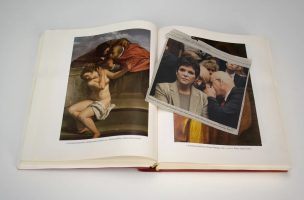
Joanne Leonard, Artemesia’s Suzanna and the Elders and Men Conspiring, 2006
(From Medium & Memory)
Board of Directors Candidate: Sharon Hecker
posted by CAA — Dec 22, 2022

Bio
Sharon Hecker (BA Yale University cum laude, MA and PhD UC Berkeley) is an art historian and curator specializing in modern and contemporary Italian art. A member of CAA since 1993, she is a leading authority on Italian sculptor Medardo Rosso and has a special interest in material history. She has published extensively on key twentieth-century Italian artists, including essays and articles on Lucio Fontana, Luciano Fabro, Marisa Merz, Giuseppe Penone and Francesco Lo Savio. She was Project Coordinator for Jenny Holzer, the first woman to represent the US at the Venice Biennale, winner of Golden Lion Award for Best Pavilion (1990) and was the liaison between Luciano Fabro and SFMoMA for his US retrospective at SFMoMA, for which she translated his theoretical writings into English.
Hecker’s books include A Moment’s Monument: Medardo Rosso and the International Origins of Modern Sculpture (UC Press, 2017, awarded CAA’s Millard Meiss Publication Fund and translated into Italian); with Marin R. Sullivan, Postwar Italian Art History: Untying the Knot (Bloomsbury, 2018); with Silvia Bottinelli, Lead in Modern and Contemporary Art (Bloomsbury, 2020); Finding Lost Wax: The Disappearance and Recovery of an Ancient Casting Technique and the Experiments of Medardo Rosso (Brill, 2020); with Peter J. Karol, Posthumous Art, Law and the Art Market: The Afterlife of Art (Routledge, 2022); with Raffaele Bedarida, Curating Fascism: Exhibitions and Memory from the Fall of Mussolini to Today (Bloomsbury, 2022); with Catherine Ramsey-Portolano, Female Cultural Production in Modern Italy: Literature, Art and Intellectual History (Palgrave, 2023); and with Arianna Arisi Rota, Disguising Disease: Italian Political And Visual Culture From Post-Unification To Covid-19 (2023, Routledge, awarded the Columbia University Seminars in Modern Italy Prize).
Hecker has received fellowships from the Getty, Fulbright, and Mellon Foundations. Her exhibitions include Medardo Rosso: Second Impressions, with Harry Cooper (Harvard University Art Museums, catalogue Yale University Press, 2004); Medardo Rosso: Experiments in Light and Form, with Tamara H. Schenkenberg (Pulitzer Arts Foundation, 2017–18); Medardo Rosso: Sight Unseen, with Julia Peyton-Jones (Galerie Ropac, 2018). She is currently organizing an exhibition on Lucio Fontana’s ceramics at the Peggy Guggenheim Collection, Venice (2025).
Hecker is Series Editor of Bloomsbury Visual Arts’ Visual Cultures and Italian Contexts Series; Deputy Chair of the International Catalogue Raisonné Association (ICRA); member of ICOM; TEFAF Vetting Committee for Sculpture (19th-century to the present), Maastricht/New York (Chair); and Coordinator of the Expert Witness Pool for the Court of Arbitration for Art. She trademarked The Hecker Standard®, a best practices approach for conducting due diligence on artworks. She lives in Milan, Italy.
Countering Feminist Indifference: Notes from the Women’s Caucus for Art
posted by CAA — Aug 15, 2022
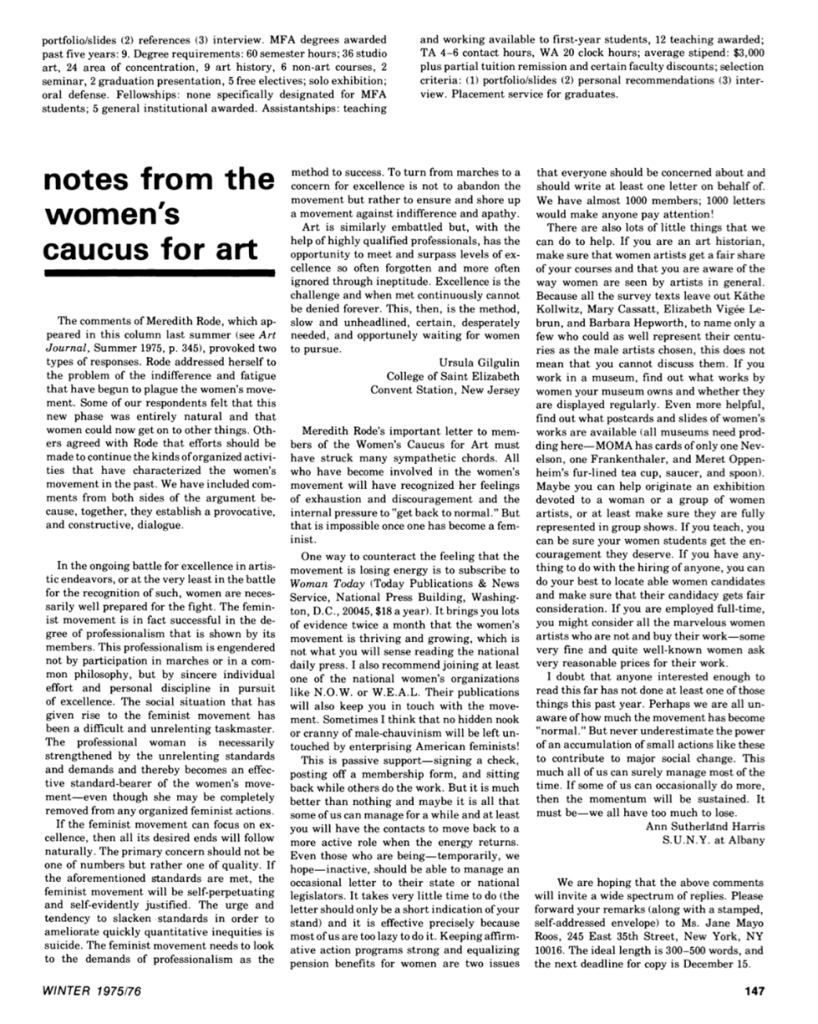
See full text reproduced below. Article also available on Jstor.
“Notes from the Women’s Caucus for Art (WCA),” a column featured in Art Journal during the 1970s, created an important forum for critical debates in the feminist art movement. In Summer 1975, for example, Meredith Rode shared evidence of fatigue with the feminist struggle in her letter “The High Price of Indifference.” Rode’s letter generated numerous responses in the winter 1975 issue, including Ann Sutherland Harris’s practical advice on how to counter this exhaustion.
The first President of WCA advocated both passive and activist gestures, ranging from sending a check to the National Organization of Women to pressuring local museums to display works by women in their collections, organizing group shows of women artists, mentoring female students, and buying women’s art.
This snapshot of WCA’s essential role in feminism art and activism reminds us how we can individually act to demand equity while working in conjunction with the collective efforts of essential national organizations, such as WCA and CAA. Read the full text below.
Post by Joanna Gardner-Huggett
Sources:
- Meredith Rode, “Notes from the Women’s Caucus for Art: The High Price of Indifference,” Art Journal (Summer 1975): 345.
- Ann Sutherland Harris, “Notes from the Women’s Caucus for Art,” Art Journal (Winter 1975/76): 147.
Biography of post author: Joanna Gardner-Huggett is an Associate Professor of History of Art and Architecture at DePaul University and Chair of the Committee on Women in the Arts. She teaches courses on twentieth-century art and feminist theory, while her research focuses on the intersection between feminist collaboration and arts activism and has been published in numerous journals and anthologies. Joanna’s most recent scholarship explores the history of the Chicago based women artists’ collectives Artemisia Gallery in Chicago (1973-2003), ARC Gallery (1973-present), and Sapphire and Crystals (1987-present).
FULL TEXT (from image): Ann Sutherland Harris, “Notes from the Women’s Caucus for Art,” Art Journal (Winter 1975/76): 147.
The comments of Meredith Rode, which appeared in this column last summer (see Art Journal, Summer 1975, p. 345), provoked two types of responses. Rode addressed herself to the problem of the indifference and fatigue that have begun to plague the women’s movement. Some of our respondents felt that this new phase was entirely natural and that women could now get on to other things. Other agreed with Rode that efforts should be made to continue the kinds of organized activities that have characterized the women’s movement in the past. We have included comments from both sides of the argument because, together, they establish a provocative, and constructive, dialogue.
In the going battle for excellence in artistic endeavors, or at the very least in the battle for the recognition of such, women are necessarily well prepared for the fight. The feminist movement is in fact successful in the degree of professionalism that is shown by its members. This professionalism is engendered not by participation in marches or in a common philosophy, but by sincere individual effort and personal discipline in pursuit of excellence. The social situation that has given rise to the feminist movement has been a difficult and unrelenting taskmaster. The professional woman is necessarily strengthened by the unrelenting standards and demands and thereby becomes an effective standard-bearer of the women’s movement—even though she may be completely remove from any organized feminist actions.
If the feminist movement can focus on excellence, then all its desire ends will follow naturally. The primary concern should not be one of the numbers but rather one of quality. If the aforementioned standards are met, the feminist movement will be self-perpetuating and self-evidently justified. The urge and tendency to slacken standards in order to ameliorate quickly quantitative inequities is suicide. The feminist movement needs to look to the demands of professionalism as the method to success. To turn from marches to a concern for excellence is not to abandon the movement but rather to ensure and shore up a movement against indifference and apathy.
Art is similarly embattled but, with the help of highly qualified professionals, has the opportunity to meet and surpass levels of excellence so often forgotten and more often ignored through ineptitude. Excellence is the challenge and when met continuously cannot be denied forever. This, then, is the method, slow and unheadlined, certain, desperately needed, and opportunely waiting for women to pursue.
Ursela Gilgulin, College of Saint Elizabeth, Convent Station, New Jersey
Meredith Rode’s important letter to members of the Women’s Caucus for Art must have struck many sympathetic chords. All who have become involved in the women’s movement will have recognized her feelings of exhaustion and discouragement and the internal pressure to “get back to normal.” But that is impossible once one has become a feminist.
One way to counteract the feeling that the movement is losing energy is to subscribe to Women Today. It brings you lots of evidence twice a month that the women’s movement is thriving and growing, which is not what you will sense reading the national daily press. I also recommend joining at least one of the national women’s organizations like N.O.W. or W.E.A.L. Their publications will also keep you in touch with the movement. Sometimes I think that no hidden nook or cranny of male-chauvinism will be left untouched by enterprising American feminists!
This is pass support—signing a check, posting off a membership form, and sitting back while others do the work. But it is much better than nothing and maybe it is all that some of us can manage for a while and at least you will have the contacts to move back to a more active role when the energy returns. Even those who are being—temporarily, we hope—in active, should be able to manage an occasional letter to their state or national legislators. It takes very little time to do (the letter should only be a short indication of your stand) and it is effective precisely because most of us are too lazy to do it. Keeping affirmative action programs strong and equalizing pension benefits for women are two issues that everyone should be concerned about and should write at least one letter on behalf of. We have almost 1000 members; 1000 letters would make anyone pay attention!
There are also lots of little things that we can do to help. If you are an art historian, make sure that women artists get a fair share of your courses and that you are aware of the way women are seen by artists in general. Because all the survey texts leave out Käthe Kollwitz, Mary Cassatt, Élisabeth Louise Vigée Le Brun, and Barbara Hepworth, to name only a few who could as well represent their centuries as the male artists chosen, this does not mean that you cannot discuss them. If you work in a museum, find out what works by women your museum owns and whether they are displayed regularly. Even more helpful, find out what postcards and slides of women’s works are available (all museums need prodding here—MOMA has cards of only one Nevelson, one Frankenthaler, and Meret Oppenheim’s fur-lined tea cup, saucer, and spoon). Maybe you can help originate an exhibition devoted to a woman or a group of women artists, or at least make sure they are fully represented in group shows. If you teach, you can be sure your women students get the encouragement they deserve. If you have anything to do with the hiring of anyone, you can do your best to locate able women candidates and makes sure that their candidacy gets fair consideration. If you are employed full-time, you might consider all the marvelous women artists who are not and buy their work—some very fine and quite well-known women ask very reasonable prices for their work.
I doubt that anyone interested enough to read this far has not done at least one of these things this past year. Perhaps we are all unaware of how much the movement has become “normal.” But never underestimate the power of an accumulation of small actions like these to contribute to major social change. This much all of us can surely manage most of the time. If some of us can occasionally do more, then the momentum will be sustained. It must be—we all have too much to lose.
Ann Sutherland Harris, S.U.N.Y at Albany
In 1972, CAA founded its first committees devoted to women in the arts. As a part of this yearlong 50th anniversary celebration, we are sharing historic materials from CAA members and archives that intersect with feminism at the organization, including CAA’s Committee on Women in the Arts (CWA) and our Affiliated Societies, Women’s Caucus for Art (WCA) and The Feminist Art Project (TFAP).
This celebration culminates in a program and reception at Boston University’s Joan and Edgar Booth Theatre on Friday, September 23, 2022. This program will reflect upon the incredible history of feminist pioneers at the organization while looking toward a more inclusive, equitable future through the continued work of the CWA. The members of CWA are carrying the torch of feminism during this crucial time of precarity for women’s rights.
Over the next couple months, visit this site (CAA News) and our social media pages to explore more about this history and items from our archives.
Pride Month and caa.reviews
posted by CAA — Jun 02, 2022
This Pride Month, we highlight the rich scholarship and programs produced at CAA that center LGBTQ+ topics, as well as gender and sexual identity, in the fields of visual arts and the humanities. This week, we are sharing a bibliography of publications and exhibitions on these topics reviewed this past year on our open-access journal caa.reviews.
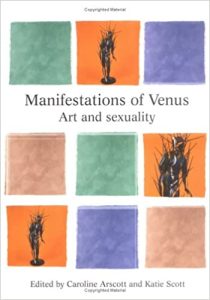 |
Arscott, Caroline and Katie Scott, editors. Manifestations of Venus: Art and Sexuality. Manchester: Manchester University Press, 2001. |
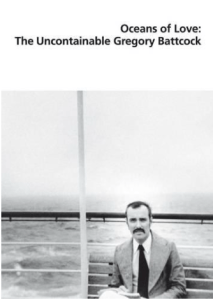 |
Battcock, Gregory. Oceans of Love: The Uncontainable Gregory Battcock. Ed Joseph Grigely, Cologne, Germany: Verlag der Buchhandlung Walther Konig, 2016. |
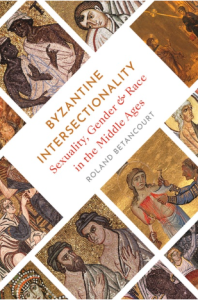 |
Betancourt, Roland. Byzantine Intersectionality: Sexuality, Gender, and Race in the Middle Ages. Princeton, NJ: Princeton University Press, 2020. |
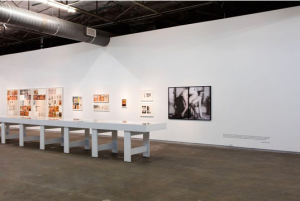 |
Black Sheep Feminism: The Art of Sexual Politics. Dallas: Dallas Contemporary, 2016. |
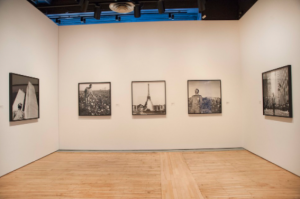 |
Brandt, Amy ed. Tseng Kwong Chi: Performing for the Camera. Norfolk, VA and New York: Chrysler Museum of Art, Grey Art Gallery, New York University, and Lyon Artbooks, 2015. |
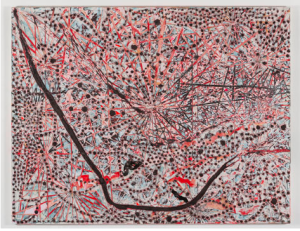 |
Butler, Connie. Mark Bradford: Scorched Earth. Exh. cat. Los Angeles: Hammer Museum in association with Prestel, 2015.
Mark Bradford. Lights and Tunnels, 2015 (photograph © 2015 Joshua White; provided by Hauser & Wirth) |
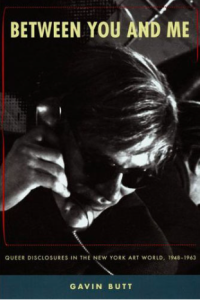 |
Butt, Gavin. Between You and Me: Queer Disclosures in the New York Art World, 1948–1963. Durham, NC: Duke University Press, 2005.
|
 |
De Salvo, Donna. Andy Warhol: From A to B and Back Again. Exh. cat. New Haven and New York: Yale University Press in association with The Whitney Museum of American Art, 2018.
Installation view, Andy Warhol—From A to B and Back Again, Whitney Museum of American Art, New York, November 12, 2018–March 31, 2019 (photograph © 2018 by Ron Amstutz, provided by The Andy Warhol Foundation for the Visual Arts, Inc./Licensed by Artists Rights Society [ARS], New York) |
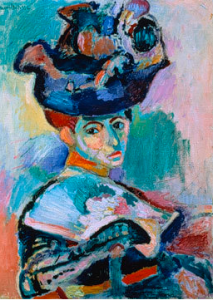 |
Corn, Wanda M. and Tirza True Latimer. Seeing Gertrude Stein: Five Stories. Exh. cat. Berkeley: University of California Press, 2011.
Henri Matisse. Woman with a Hat (1905). Oil on canvas. 31 3/4 x 23 1/2 in. (80.7 x 59.7 cm). SFMOMA, Bequest of Elise S. Haas. © Succession H. Matisse, Paris / Artists Rights Society (ARS), New York. Photo: Ben Blackwell |
 |
Doyle, Jennifer. Hold It Against Me: Difficulty and Emotion in Contemporary Art. Durham: Duke University Press, 2013. |
 |
Findlen, Paula, Wendy Wassyng Roworth, and Catherine M. Sama, editors. Italy’s Eighteenth Century: Gender and Culture in the Age of the Grand Tour. Stanford: Stanford University Press, 2009. |
 |
Gallucci, Margaret A. Benvenuto Cellini: Sexuality, Masculinity, and Artistic Identity in Renaissance Italy. New York: Palgrave Macmillan, 2003. |
 |
Gill, Lyndon K. Erotic Islands: Art and Activism in the Queer Caribbean. Durham, NC: Duke University Press, 2018. |
 |
Gómez-Barris, Macarena. Beyond the Pink Tide: Art and Political Undercurrents in the Americas. American Studies Now: Critical Histories of the Present. Oakland: University of California Press, 2018. |
 |
Guyton, Wade. One Month Ago. Edition of 500. New York: Karma, 2014. |
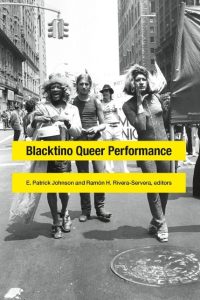 |
Johnson, E. Patrick and Ramón H. Rivera-Servera, editors. Blacktino Queer Performance. Durham: Duke University Press, 2016. |
 |
Jones, Amelia. Seeing Differently: A History and Theory of Identification and the Visual Arts. New York: Routledge, 2012. |
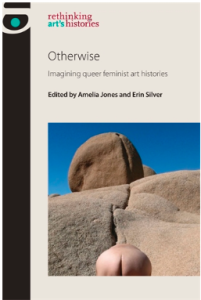 |
Jones, Amelia and Erin Silver. Otherwise: Imagining Queer Feminist Art Histories. Manchester: Manchester University Press, 2016.
With follow-up interview between Amelia Jones and David J. Getsy, Abstract Bodies and Otherwise: A Conversation with Amelia Jones and David Getsy on Gender and Sexuality in the Writing of Art History. February 16, 2018 |
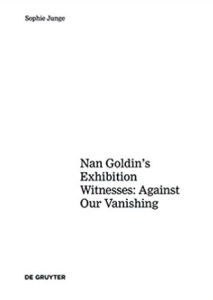 |
Junge, Sophie. Art about AIDS: Nan Goldin’s Exhibition Witnesses: Against Our Vanishing Berlin: De Gruyter, 2017. |
 |
Katz, Jonathan David and Rock Hushka, editors. Art AIDS America. Exh. cat. Seattle: Tacoma Art Museum in association with University of Washington Press, 2015.
Courtesy of the Zuckerman Museum of Art. Photos by Mike Jensen |
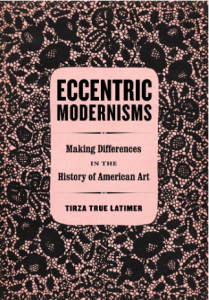 |
Latimer, Tirza True. Eccentric Modernisms: Making Differences in the History of American Art. Oakland: University of California Press, 2016. |
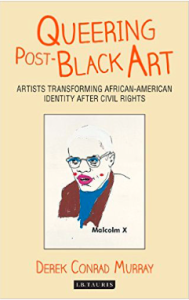 |
Murray, Derek Conrad. Queering Post-Black Art: Artists Transforming African-American Identity after Civil Rights. London: I.B. Taurus, 2016. |
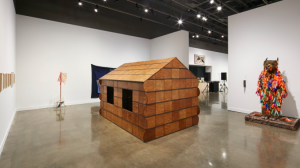 |
No Wrong Holes: Thirty Years of Nayland Blake. Institute of Contemporary Art, Los Angeles, September 29, 2019–January 26, 2020; MIT List Visual Arts Center (online), Cambridge, MA, October 16, 2020–February 14, 2021.
No Wrong Holes: Thirty Years of Nayland Blake, installation view, MIT List Visual Arts Center, Cambridge, MA, 2020–21 (photograph © Charles Mayer, provided by MIT List Visual Arts Center) |
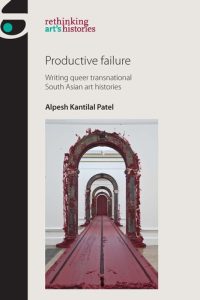 |
Patel, Alpesh Kantilal. Productive Failure: Writing Queer Transnational South Asian Art Histories. Manchester, UK: Manchester University Press, 2017. |
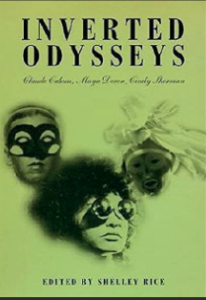 |
Rice, Shelley. Inverted Odysseys: Claude Cahun, Maya Deren, Cindy Sherman. Cambridge, Mass.: MIT Press, 1999. |
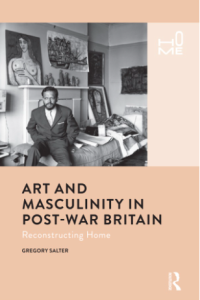 |
Salter, Gregory. Art and Masculinity in Post-War Britain: Reconstructing Home. London: Routledge, 2019. |
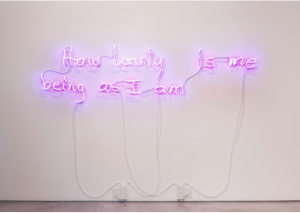 |
Transamerica/n: Gender, Identity, Appearance Today. McNay Art Museum, San Antonio, June 20–September 15, 2019.
Jacolby Satterwhite, How lovly is me being as I am, 2014, neon, installation view from Transamerica/n: Gender, Identity, Appearance Today, McNay Art Museum, San Antonio, 2019 (artwork © Jacolby Satterwhite; photograph provided by the artist and Morán Morán, Los Angeles) |
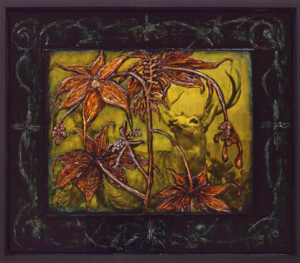 |
Tony Greene: Room of Advances. MAK Center for Art and Architecture, Schindler House, Los Angeles, June 18–September 7, 2014.
Tony Greene. His Puerile Gestures (1989). Mixed Media. 25 1/2 x 29 3/4 in. Collection of Ray Morales, from the estate of Norm MacNeil |
 |
Turner, James Grantham. Eros Visible: Art, Sexuality and Antiquity in Renaissance Italy. New Haven: Yale University Press, 2017. |
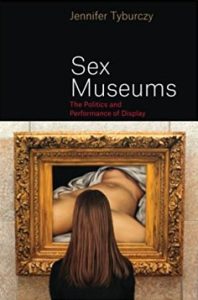 |
Tyburczy, Jennifer. Sex Museums: The Politics and Performance of Display. Chicago: University of Chicago Press, 2016. |
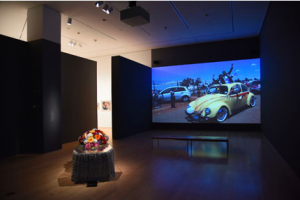 |
Zanele Muholi: Isibonelo/Evidence. Brooklyn Museum, New York, May 1–November 8, 2015.
Zanele Muholi: Isibonelo/Evidence. Installation view. Courtesy of the Brooklyn Museum. |

Annual Artist Interview, Willie Cole
posted by CAA — Apr 05, 2022
On February 18, 2022, Willie Cole was featured in the Annual Artists’ Interviews at CAA’s 110th Annual Conference. Watch the interview in full below!
Beginning in 1997, the Annual Artists’ Interviews were established to provide the opportunity for esteemed artists to have one-on-one conversations with colleagues at the Annual Conference. Each year, the Services to Artists Committee (SAC) identifies two distinguished artists to participate. The interviews are held annually as part of the Services to Artists Program at the conference.
Willie Cole is a contemporary American sculptor, printer, and perceptual engineer. His work uses contexts of postmodern eclecticism, and combines references and appropriation from African and African American imagery. Cole is best known for his Dada and Surrealist readymades, which assemble and transform ordinary domestic and used objects such as irons, ironing boards, high-heeled shoes, hair dryers, bicycle parts, wooden matches, lawn jockeys, and other discarded appliances and hardware. Cole grew up in Newark, NJ. He attended the Boston University School of Fine Arts, received his Bachelor of Fine Arts degree from the School of Visual Arts in New York in 1976, and continued his studies at the Art Students League of New York from 1976 to 1979.
Recent exhibitions of Cole’s work include To Reclaim, Kavi Gupta, Chicago, IL, USA; New Concepts in Printmaking 2: Willie Cole, MoMA, New York, NY, USA; Reconfiguring an African Icon: Odes to the Mask by Modern and Contemporary Artists from Three Continents, Metropolitan Museum of Art, New York, NY, USA; Chicago, Surrealism: The Conjured Life, Museum of Contemporary Art, Chicago, IL, USA; and Afro: Black Identity in America and Brazil, Tamarind Institute, Albuquerque, NM, USA. Cole’s work is in the permanent collection of the Whitney Museum of American Art, New York, NY; Walker Art Center, Minneapolis, MN; MoMA, New York, NY; National Gallery of Art, Washington, DC; High Museum of Art, Atlanta, GA; Studio Museum in Harlem, NY; Metropolitan Museum of Art, New York, NY; Museum of Contemporary Art, Chicago, IL; Albright-Knox Art Gallery, Buffalo, NY; and many others.




